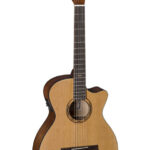"My guitar is not a thing," declared Joan Jett, encapsulating the profound connection many musicians feel with their instrument. "It is an extension of myself. It is who I am." The guitar, in its universality, primal resonance, and expressive capacity, stands as a testament to human creativity. While anyone can strum a chord in moments, a lifetime isn’t enough to plumb its depths. This inherent duality – accessibility and infinite possibility – is precisely what fuels the enduring fascination with guitarists and the ongoing debate: who is the Greatest Guitar Player In The World?
Rolling Stone magazine ignited this very conversation in 2011 with their inaugural "100 Greatest Guitarists" list, curated by a panel of seasoned musicians. Now, in a broader, more contemporary exploration, the editors and writers of Rolling Stone have expanded that list to 250 names, aiming to capture the sprawling landscape of guitar innovation.
This expanded list isn’t just a roll call of mythic guitar heroes like Jimmy Page, Brian May, and Eddie Van Halen. It’s a journey through the evolution of the instrument itself. From Elizabeth Cotten, born in 1893, to Lindsey Jordan, born in 1999, the list spans generations and genres. Rock, jazz, reggae, country, folk, blues, punk, metal, disco, funk, bossa nova, bachata, Congolese rumba, flamenco – the sheer breadth reflects the guitar’s chameleonic adaptability. Virtuosos like Pat Metheny, Yvette Young, and Steve Vai share space with raw innovators like Johnny Ramone and Poison Ivy, while stadium giants such as Prince, Joni Mitchell, and Neil Young are acknowledged alongside studio legends like Teenie Hodges and Larry Carlton.
Recognizing the power of collaboration, the list also celebrates iconic duos: Kim and Kelley Deal of the Breeders, Adrian Smith and Dave Murray of Iron Maiden, and others who achieved greatness in tandem. The criteria, however, remains focused on the six-string tradition, acknowledging but setting aside other stringed instrument virtuosity for now.
The selection process favored artists who prioritized substance over style. Heaviness edged out technical perfection, feel triumphed over polish, and invention was valued above mere refinement. Crucially, the list leans towards those who translated their guitar prowess into impactful songs and groundbreaking albums, not just dazzling displays of skill.
As modern blues luminary Gary Clark Jr. aptly stated, “I don’t know if I want to get too far off the path — I don’t want to get lost in the forest — but I like to wander out a bit and adventure.” This spirit of adventure, of pushing boundaries and forging unique musical paths, is what truly defines the greatest guitar player in the world – a title not easily bestowed, but constantly debated and redefined by each generation of artists.
Andy Summers
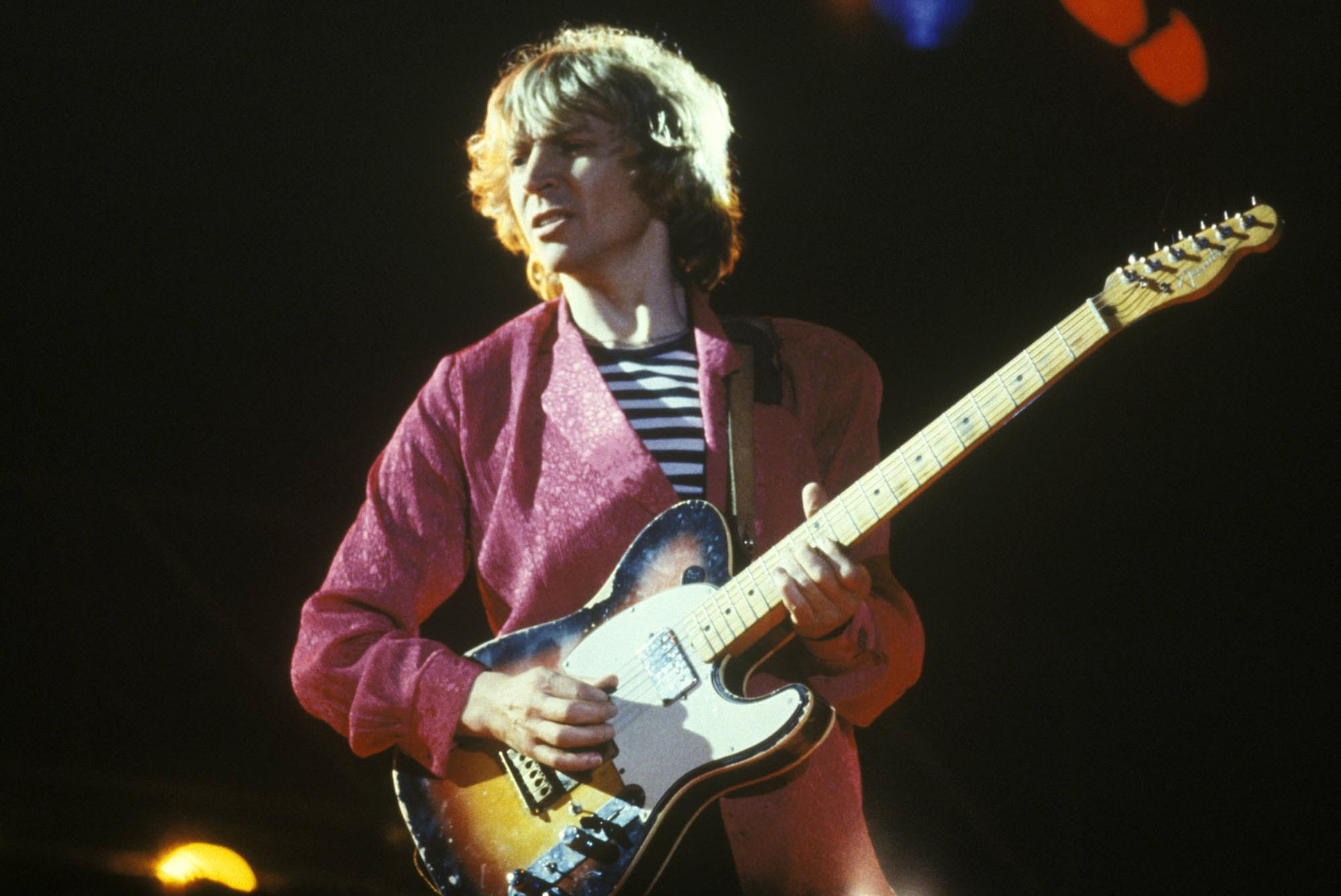 Andy Summers of The Police performing live on stage, playing his iconic Fender Telecaster, showcasing the innovative guitar work that cemented his place among the greatest guitar players. Image Credit: Graham Wiltshire/Redferns/Getty Images
Andy Summers of The Police performing live on stage, playing his iconic Fender Telecaster, showcasing the innovative guitar work that cemented his place among the greatest guitar players. Image Credit: Graham Wiltshire/Redferns/Getty Images
The Police redefined the power trio format, largely due to Andy Summers’ distinctive approach. Moving beyond punk’s confines, he integrated jazz harmonies and reggae rhythms into driving rock anthems. Summers’ playing was characterized by its minimalism, crafting sparse, impactful phrases that left space for Sting and Stewart Copeland to shine. “His tone and style were just absolutely perfect — he left space around everything,” noted Rush’s Alex Lifeson. “And he can handle anything from beautiful acoustic playing to jazz to hybrid kinds of stuff.”—D.W.
Key Tracks: “Message in a Bottle,” “Every Breath You Take”
Brittany Howard
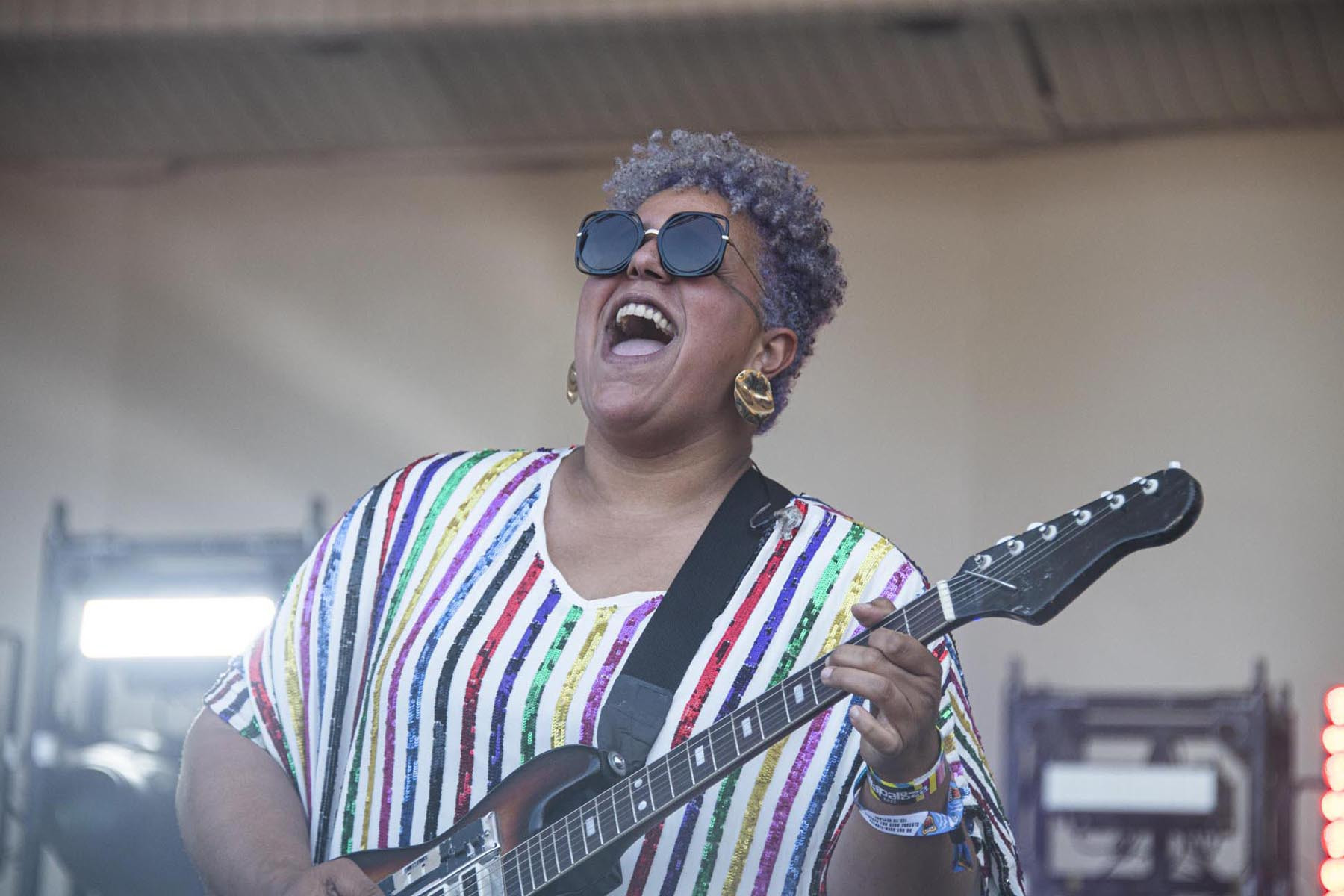 Brittany Howard of Alabama Shakes, captured in a portrait showcasing her raw talent and soulful guitar playing, a testament to her status as one of the most compelling modern guitarists. Image Credit: Sacha Lecca for Rolling Stone
Brittany Howard of Alabama Shakes, captured in a portrait showcasing her raw talent and soulful guitar playing, a testament to her status as one of the most compelling modern guitarists. Image Credit: Sacha Lecca for Rolling Stone
From her beginnings with Alabama Shakes, Brittany Howard’s guitar work has been a raw, organic complement to her powerful vocals and soulful songwriting. Her rhythmic sensibility is elastic and dynamic, evident in her interplay with Heath Fogg on “Don’t Wanna Fight.” Howard explored straight-ahead rock with Thunderbitch, and her solo album, Jaime, highlighted her versatile musicianship, from the funk-infused “History Repeats” to the heavy fuzz of “Presence.”—J.D.
Key Tracks: “History Repeats,” “Presence”
Robby Krieger
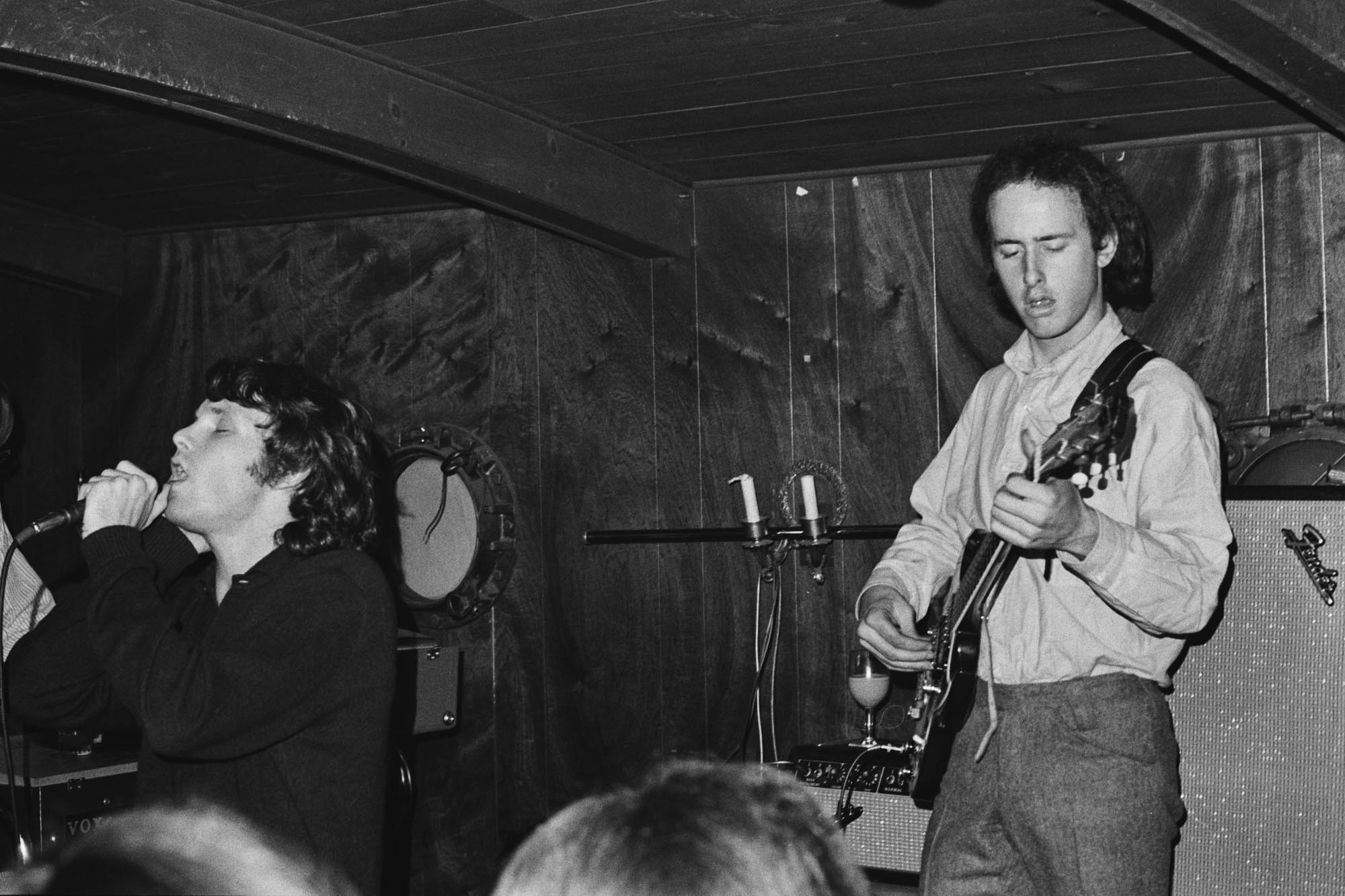 Robby Krieger of The Doors performing live in 1966, demonstrating his flamenco and jazz-infused guitar style that expanded the boundaries of rock guitar playing. Image Credit: Don Paulsen/Michael Ochs Archives/Getty Images
Robby Krieger of The Doors performing live in 1966, demonstrating his flamenco and jazz-infused guitar style that expanded the boundaries of rock guitar playing. Image Credit: Don Paulsen/Michael Ochs Archives/Getty Images
Robby Krieger, with his background in flamenco and jazz, transcended rock conventions when many guitarists were still rooted in blues traditions. In The Doors, his improvisational skills matched Jim Morrison’s unpredictable performances. Krieger penned hits like “Light My Fire” and filled the sonic space in their unique keyboard-drums-guitar lineup. “Not having a bass player … made me play more bass notes to fill out the bottom,” he explained. “Not having a rhythm player also made me play differently, to fill out the sound. I always felt like three players simultaneously.” —A.L.
Key Tracks: “Riders on the Storm,” “Roadhouse Blues”
Ricky Wilson
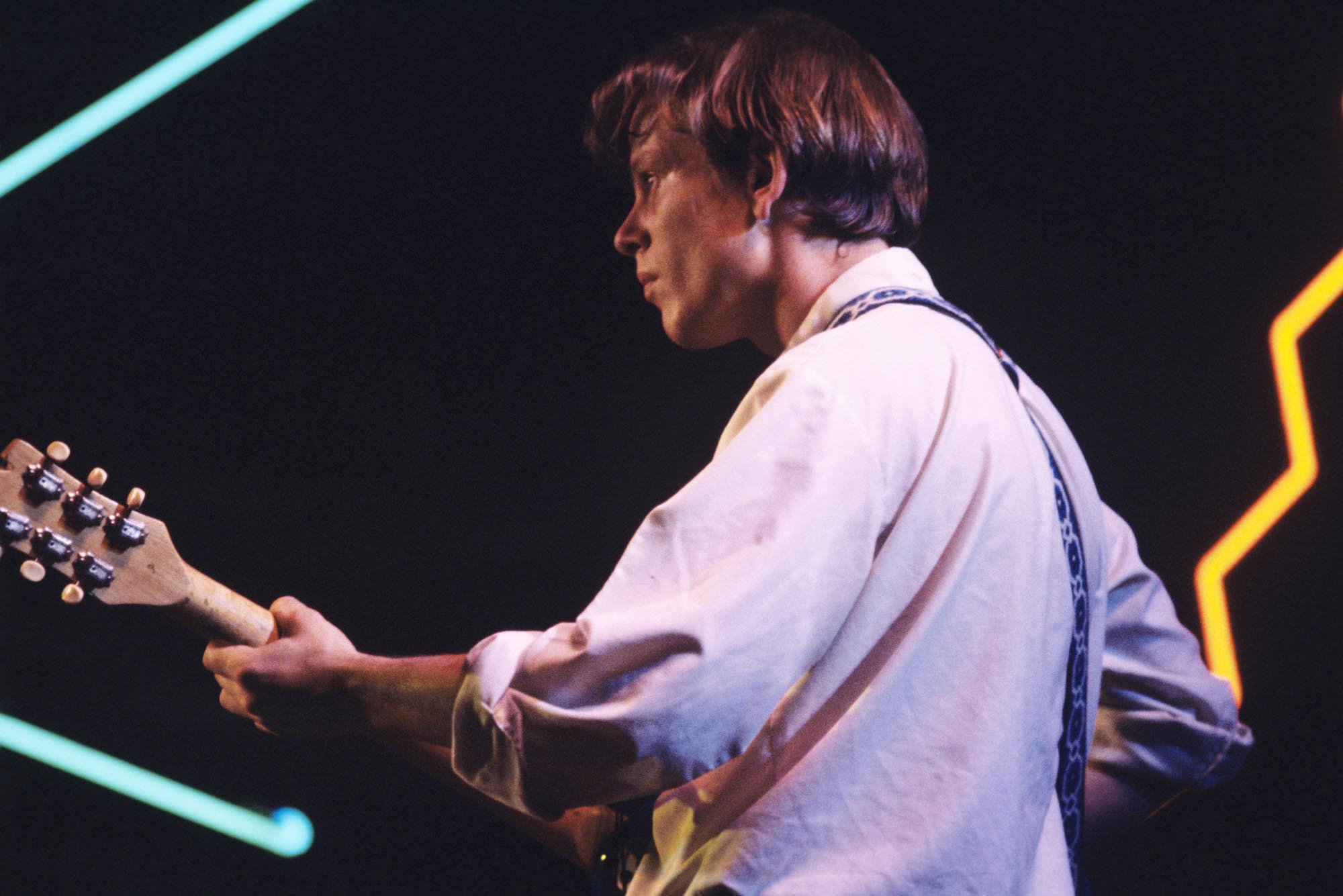 Ricky Wilson of The B-52s performing live in 1978, showcasing his unique and inventive guitar style that defined the sound of New Wave music. Image Credit: Tom Hill/WireImage
Ricky Wilson of The B-52s performing live in 1978, showcasing his unique and inventive guitar style that defined the sound of New Wave music. Image Credit: Tom Hill/WireImage
Ricky Wilson, the guitarist for The B-52s, often appeared unassuming amidst the band’s flamboyant stage presence. However, his blend of chicken scratch funk, post-punk angularity, rockabilly twang, and surf rock shimmer on tracks like “52 Girls” and “Private Idaho” established him as a uniquely inventive guitarist of the New Wave era. Wilson often employed unconventional tunings and only a few strings on his Mosrite guitar to achieve his signature spartan yet strange sound. “I just tune the strings till I hear something I like,” he once remarked. His untimely death in 1985 marked the loss of an unassuming radical in indie-rock. —J.D.
Key Tracks: “52 Girls,” “Mesopotamia”
Paul Simon
 Paul Simon performing with his acoustic guitar in 1980, illustrating his masterful songwriting and intricate guitar work that has spanned decades of musical innovation. Image Credit: Paul Natkin/Getty Images
Paul Simon performing with his acoustic guitar in 1980, illustrating his masterful songwriting and intricate guitar work that has spanned decades of musical innovation. Image Credit: Paul Natkin/Getty Images
Paul Simon, celebrated for his lyrical brilliance, is equally articulate through his guitar. Influenced by early doo-wop and rock & roll, Simon embraced the folk revival, studying acoustic mastery in England with Bert Jansch. He continuously absorbed diverse influences, exemplified in “Dazzling Blue.” “All that folk fingerpicking is what I did with Simon and Garfunkel, but [here] it’s on top of this rhythm with Indian musicians playing in 12/8.” Even in his eighties, his nimble playing remains, as showcased on his 2023 album Seven Psalms.–W.H.
Key Tracks: “Dazzling Blue,” “Kathy’s Song”
Leslie West
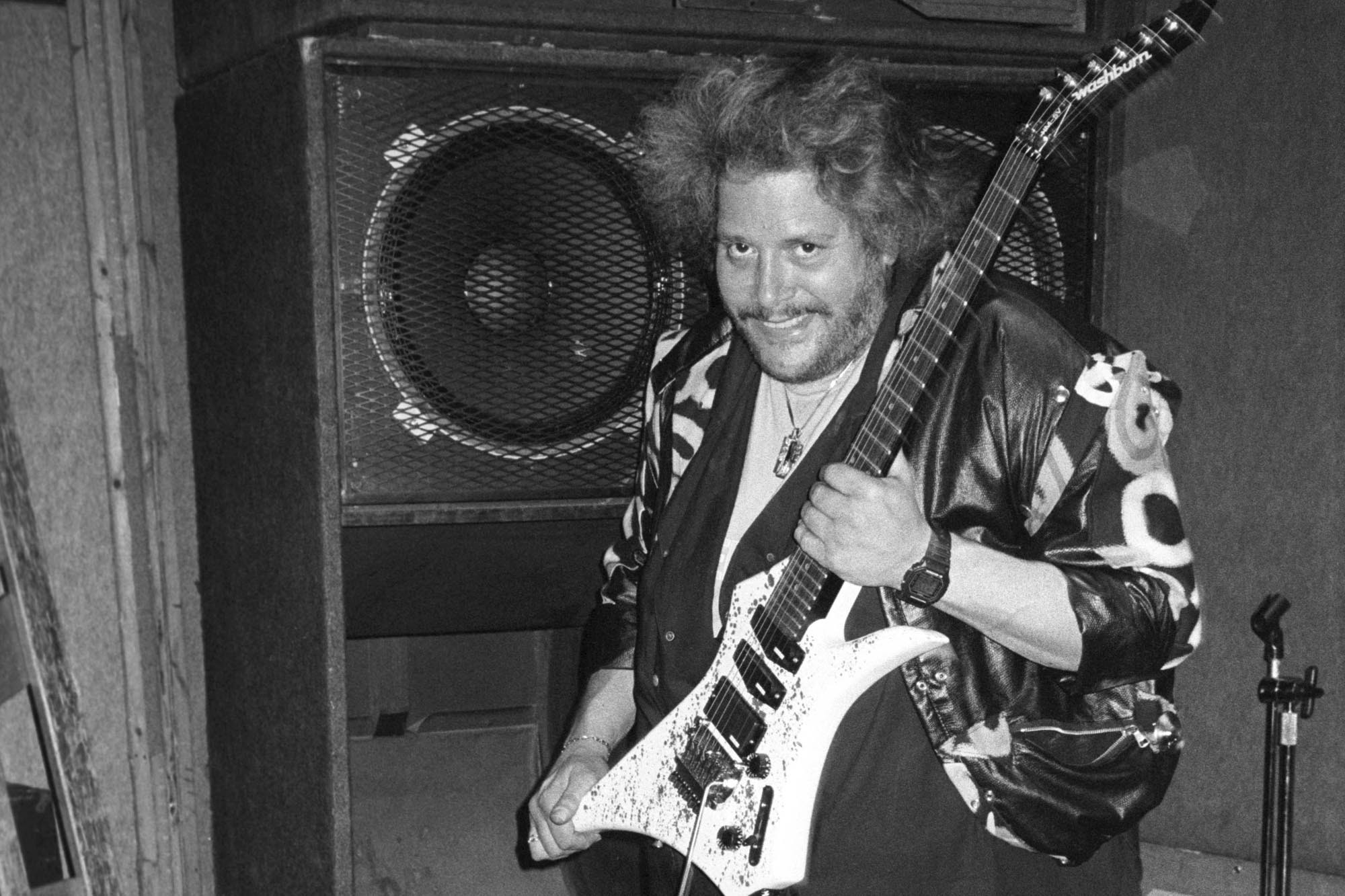 Leslie West of Mountain performing live, capturing his powerful stage presence and signature heavy guitar sound that defined an era of rock music. Image Credit: Erica Echenberg/Redferns/Getty Images
Leslie West of Mountain performing live, capturing his powerful stage presence and signature heavy guitar sound that defined an era of rock music. Image Credit: Erica Echenberg/Redferns/Getty Images
Leslie West (Leslie Weinstein) initially gained recognition in mid-Sixties garage rock with the Vagrants. By 1969, West became the driving force behind the Cream-esque quartet Mountain. On their 1970 hit “Mississippi Queen,” West delivered powerful blues lines with surprising finesse and R&B inflection, all drenched in thick, distorted tones. “The riffs were incredible,” Dave Davies noted. “He could play flashy, intricate phrases. But he wasn’t a look-at-me guy. He played with feel.” —D.F.
Key Tracks: “Mississippi Queen,” “Nantucket Sleighride (To Owen Coffin)”
Edilio Paredes
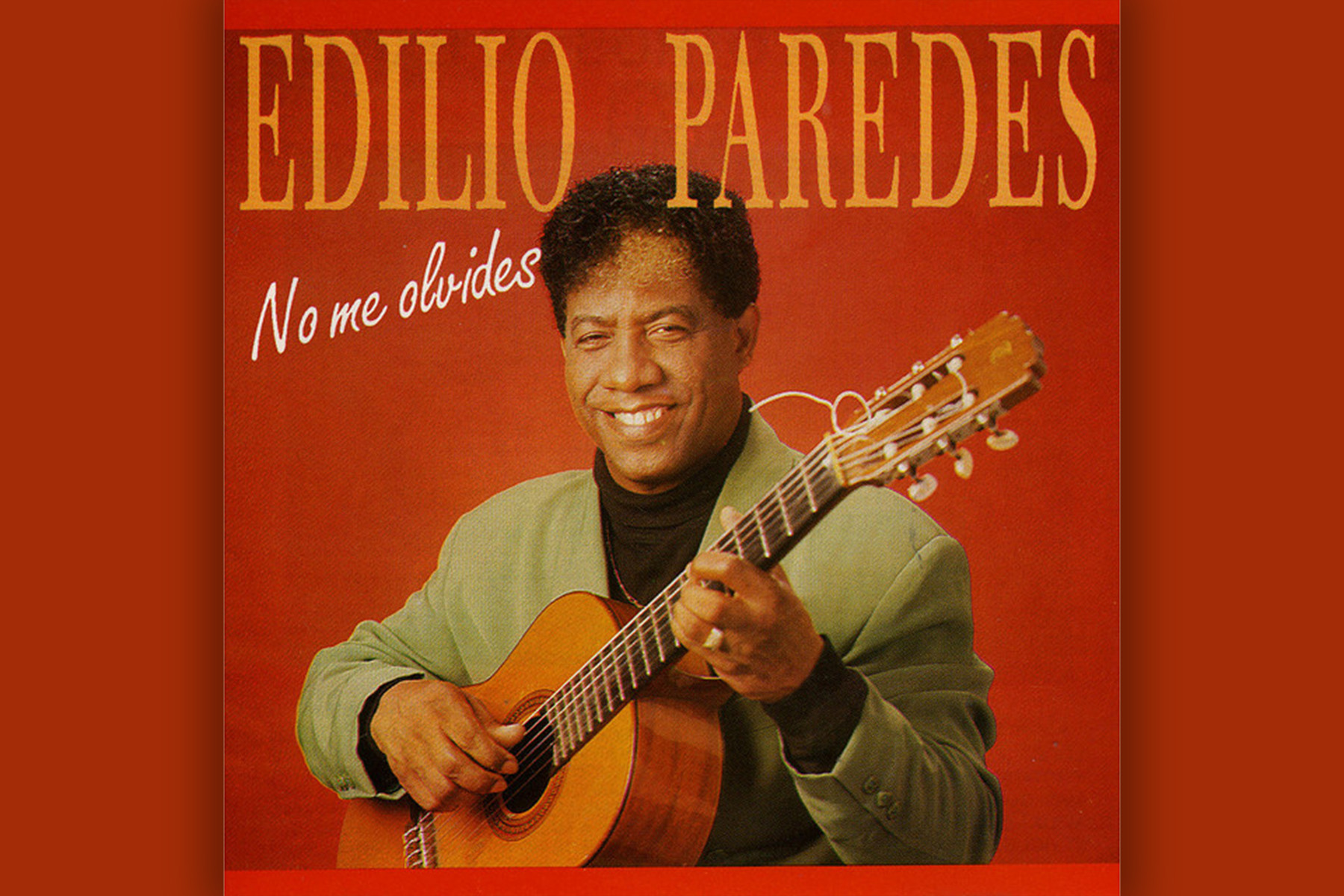 Edilio Paredes, a pioneer of Bachata guitar, in a portrait that reflects his profound influence on Latin music and his mastery of emotive guitar melodies. Image Credit: Rolling Stone
Edilio Paredes, a pioneer of Bachata guitar, in a portrait that reflects his profound influence on Latin music and his mastery of emotive guitar melodies. Image Credit: Rolling Stone
Edilio Paredes is the architect of bachata’s sonic identity, the spiraling guitar lines that express the genre’s bittersweet themes. A self-taught prodigy, he was instrumental in evolving bolero campesino into contemporary bachata, which gained global recognition in the Nineties. Paredes’ extensive discography from the ‘60s to ‘80s speaks volumes, and his appearance on The Bachata Legends album solidified his maestro status. —E.L.
Key Tracks: “No Me Olvides,” “Bendita Nena”
Aaron Dessner and Bryce Dessner
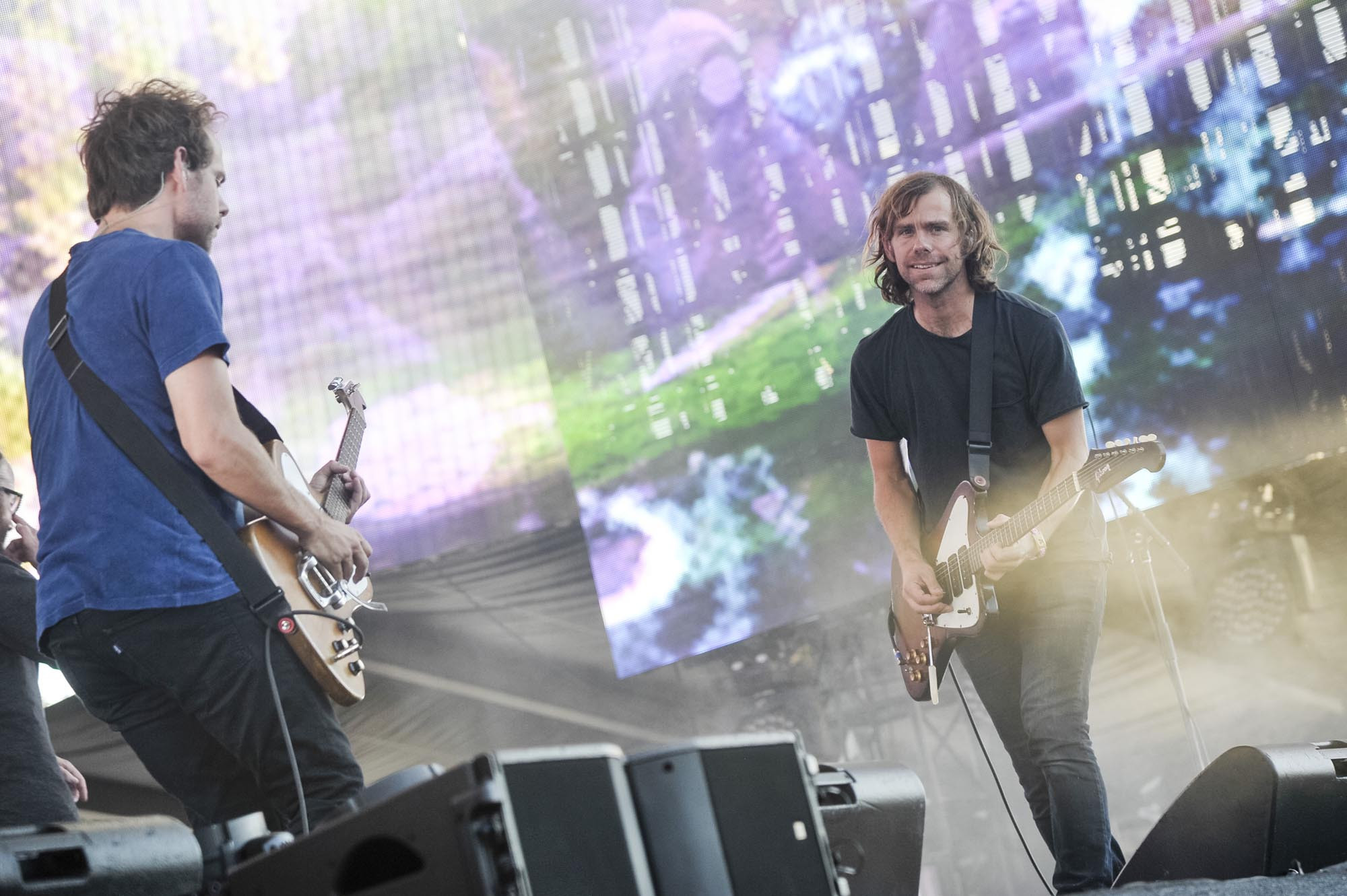 Aaron and Bryce Dessner of The National performing live, demonstrating their unique twin-guitar synergy that defines the band's sound and their individual virtuosities. Image Credit: Kris Connor/FilmMagic
Aaron and Bryce Dessner of The National performing live, demonstrating their unique twin-guitar synergy that defines the band's sound and their individual virtuosities. Image Credit: Kris Connor/FilmMagic
The National’s twin-guitar duo, Aaron and Bryce Dessner, are virtuosos in their own right and as a pair. Bryce has collaborated with Steve Reich and Jonny Greenwood, while Aaron is Taylor Swift’s guitar partner on Folklore and Evermore. Together, they create electric intensity and intimate folk beauty. They also curated the Grateful Dead tribute Day of the Dead, jamming with Bob Weir.—R.S.
Key Tracks: “Mr. November,” “Bloodbuzz Ohio,” “The System Only Dreams in Total Darkness”
Lindsey Jordan
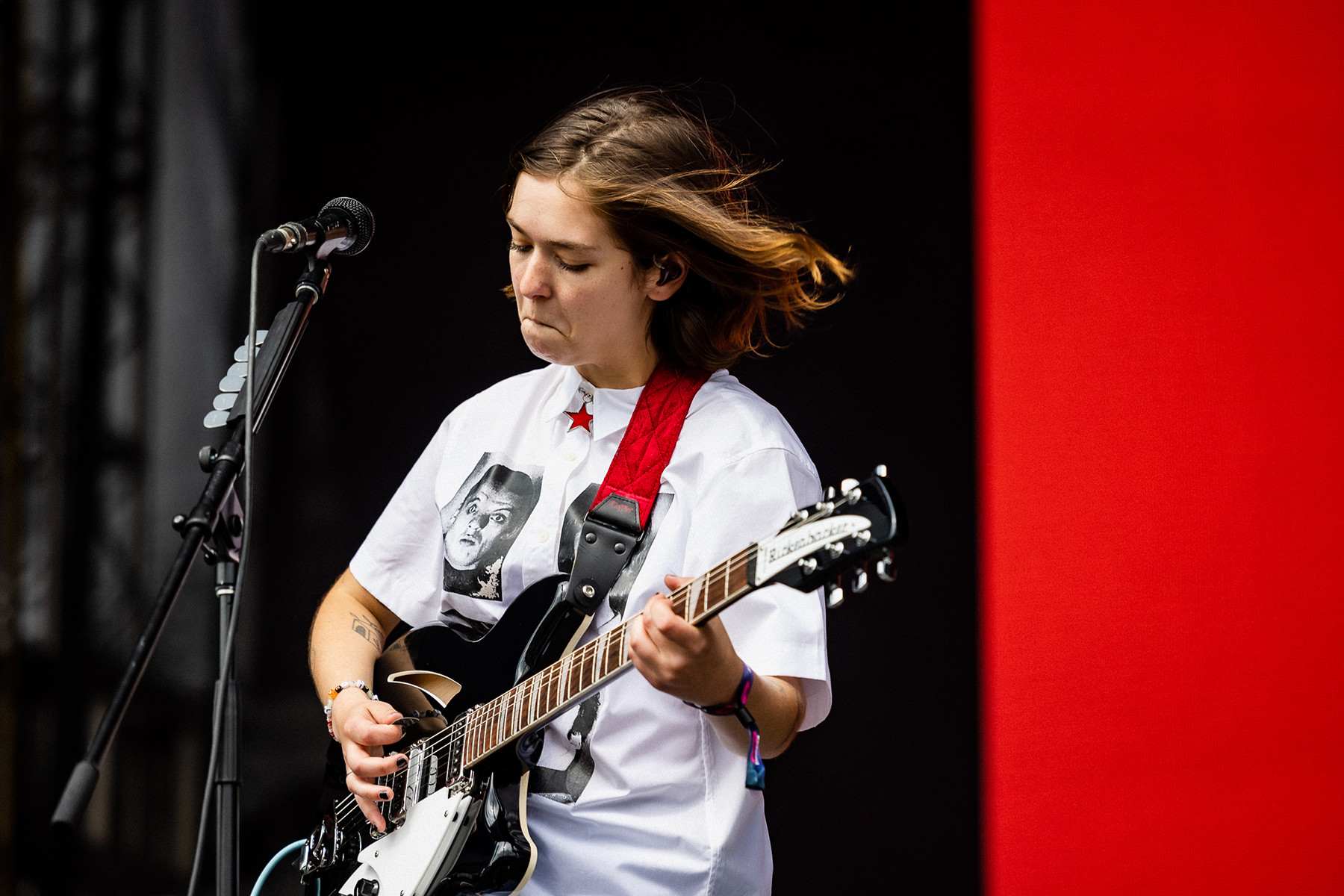 Lindsey Jordan of Snail Mail performing live, showcasing her Gen Z guitar hero status and her ability to seamlessly blend indie-rock influences with virtuosic guitar skills. Image Credit: Griffin Lotz for Rolling Stone
Lindsey Jordan of Snail Mail performing live, showcasing her Gen Z guitar hero status and her ability to seamlessly blend indie-rock influences with virtuosic guitar skills. Image Credit: Griffin Lotz for Rolling Stone
Lindsey Jordan, Gen Z guitar prodigy of Snail Mail, studied under Mary Timony. Her debut at 18 with Lush showcased a fully formed indie-rock sensibility. She effortlessly transitions between delicate strumming and explosive solos, embodying a cool virtuosity. “I like to play really balls out,” she stated in 2018. “That’s what it means to be onstage with integrity.”—J.D.
Key Tracks: “Heat Wave,” “Pristine”
Keith Urban
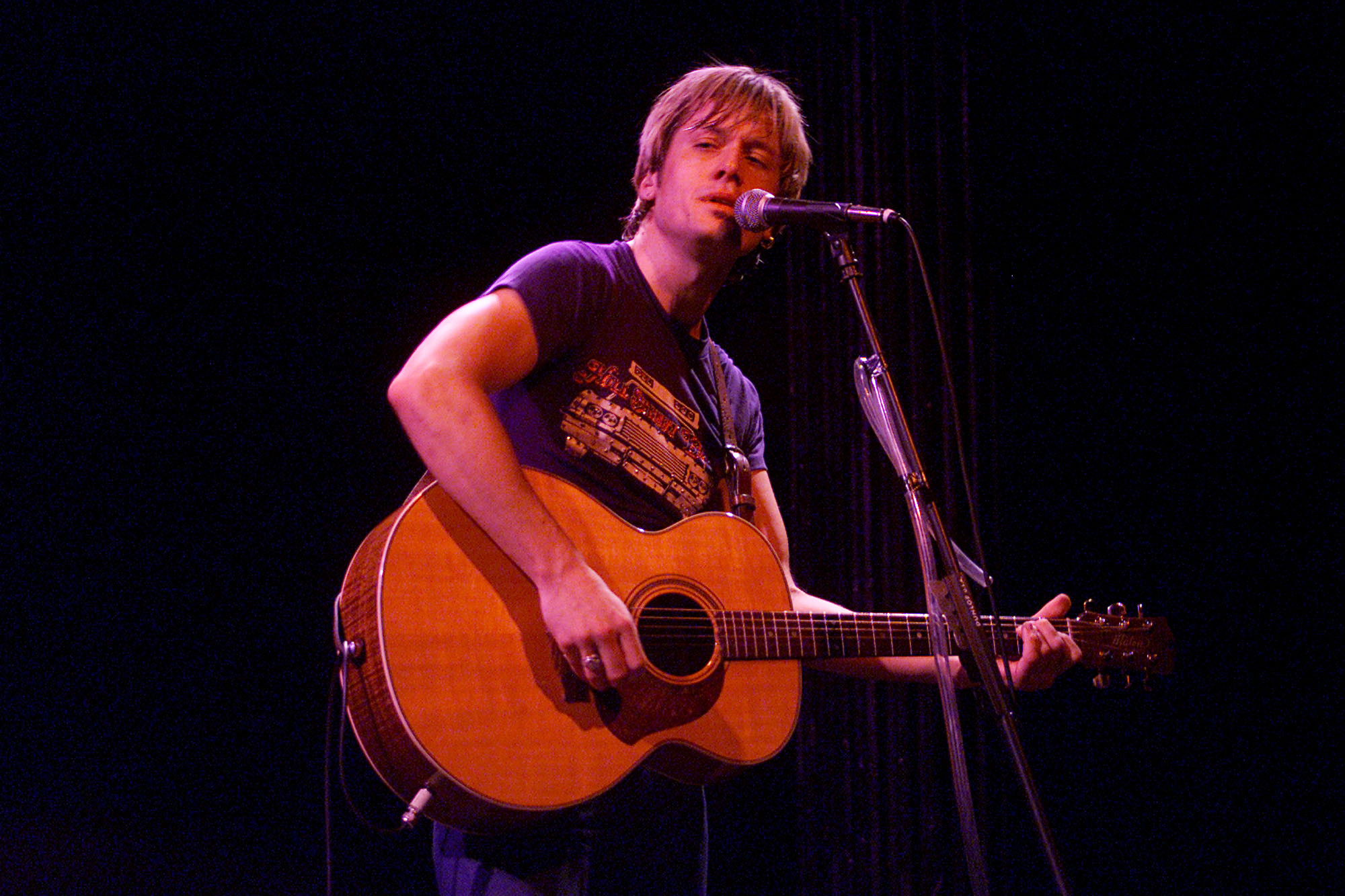 Keith Urban performing live, capturing his effortless guitar style and stage presence that solidify his place among country and rock guitar legends. Image Credit: Frank Micelotta/Getty Images
Keith Urban performing live, capturing his effortless guitar style and stage presence that solidify his place among country and rock guitar legends. Image Credit: Frank Micelotta/Getty Images
Keith Urban, while not strictly traditional country, stands out for his fluid and natural guitar style. His riffs and solos seem to emerge organically, always enhancing the song. Subtlety is key, yet every note resonates. While impressive in studio, Urban truly shines live, delivering guitar heroics worthy of rock’s pantheon. “I love that people want to hear the guitar,” Urban said in 2015, “but I just think about the song … whatever the song seems to want.” —J.H.
Key Tracks: “Highway Don’t Care,” “Blue Ain’t Your Color”
Erin Smith
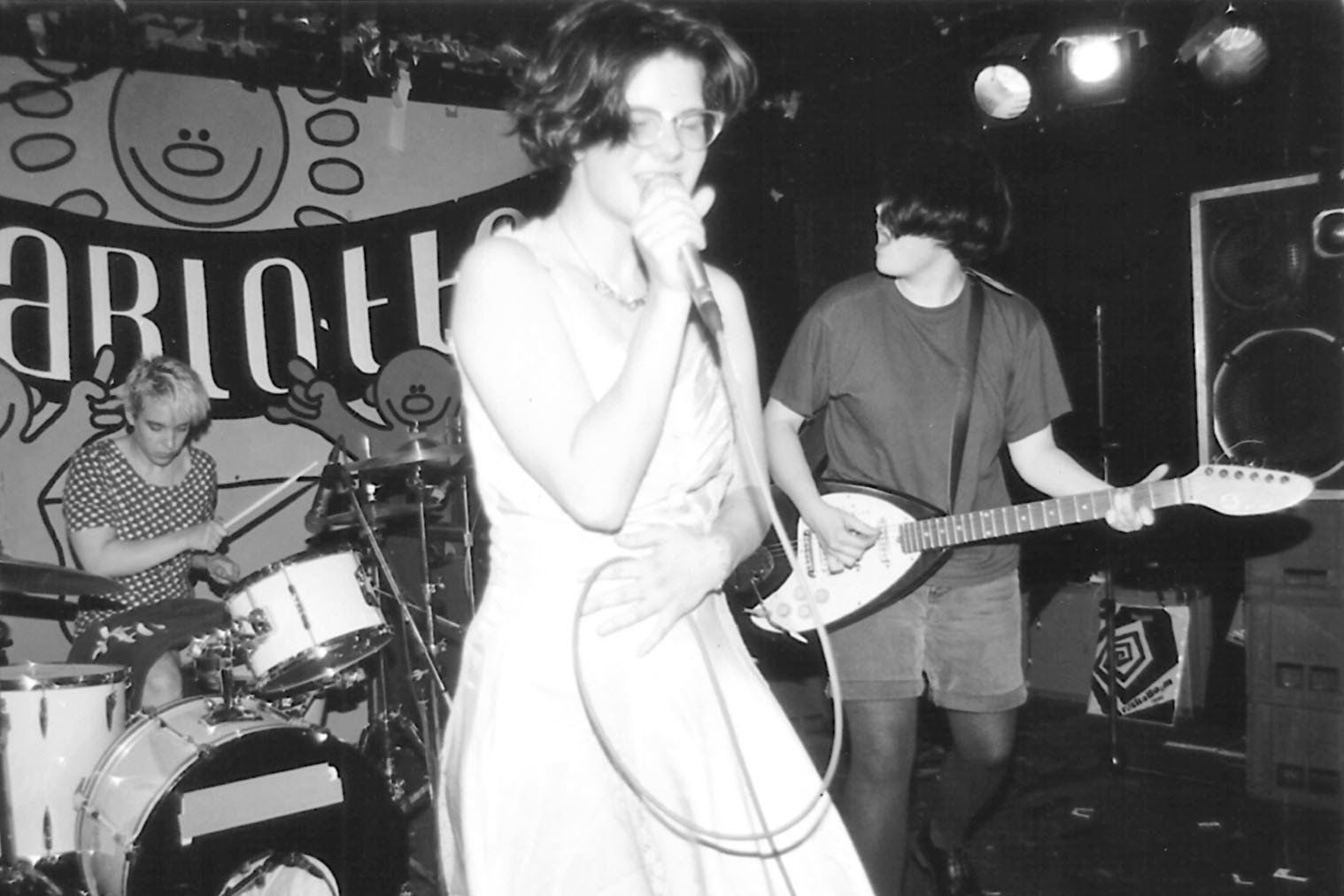 Erin Smith of Bratmobile in a live performance, demonstrating her influential riot grrrl guitar style that combined melodic bass lines with raw punk energy. Image Credit: © Greg Neate/neatephotos.com/flickr CC BY 2.0
Erin Smith of Bratmobile in a live performance, demonstrating her influential riot grrrl guitar style that combined melodic bass lines with raw punk energy. Image Credit: © Greg Neate/neatephotos.com/flickr CC BY 2.0
Erin Smith of Bratmobile, riot grrrl pioneers, drew inspiration from Beat Happening’s DIY ethos. “That was in ’87, and not only did I see women could play music, but I could see that just you could do it yourself,” she recalled. Her style combined melodic surf-rock bass lines with garage-rock chords, making Bratmobile’s Pottymouth a defining punk album of the Nineties.—E.G.P.
Key Tracks: “Love Thing,” “P.R.D.C.T.”
Duane Eddy
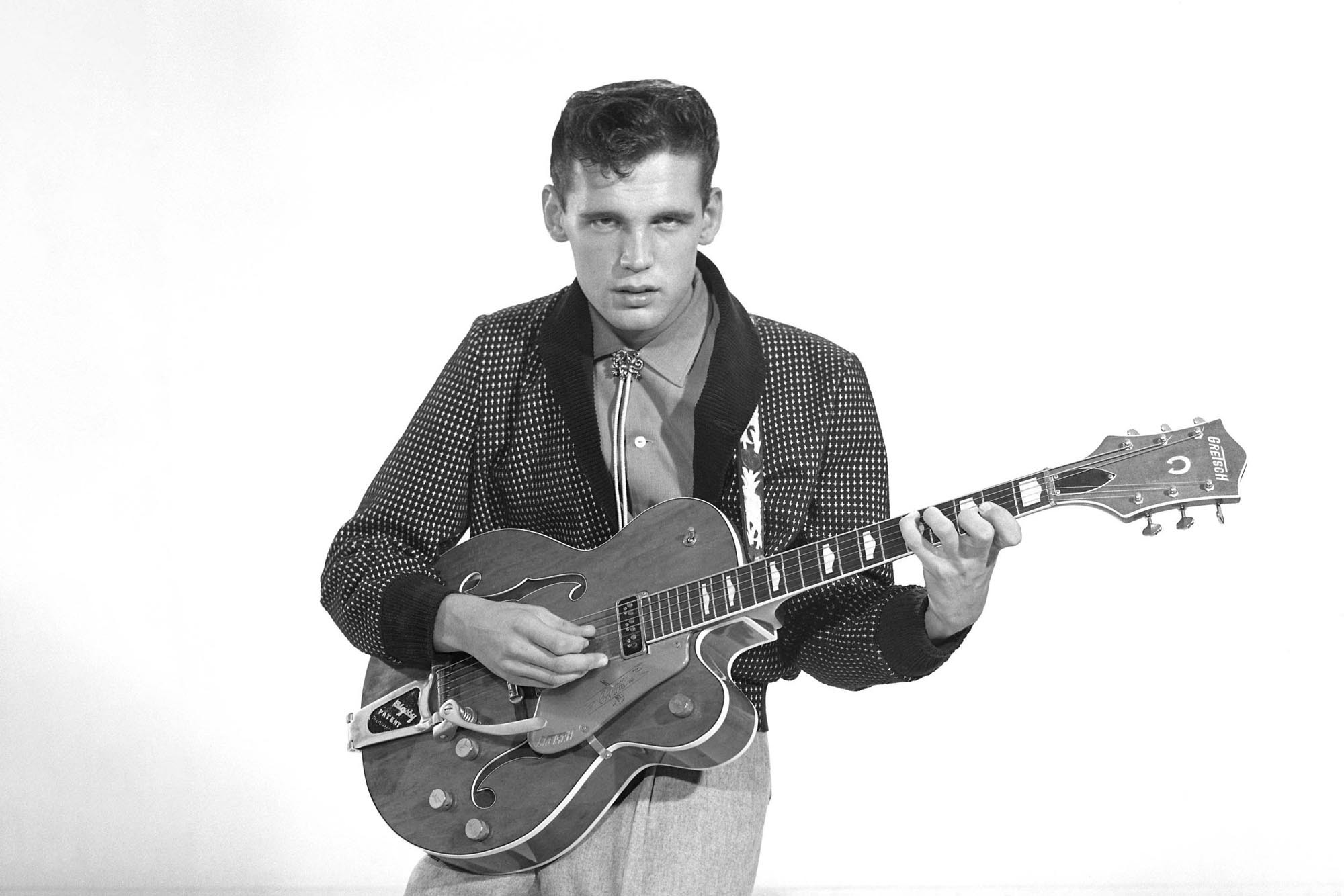 Duane Eddy posing in 1958, a portrait capturing the cool and influential guitarist who solidified the guitar as rock and roll's lead instrument. Image Credit: PoPsie Randolph/Michael Ochs Archives/Getty Images
Duane Eddy posing in 1958, a portrait capturing the cool and influential guitarist who solidified the guitar as rock and roll's lead instrument. Image Credit: PoPsie Randolph/Michael Ochs Archives/Getty Images
Duane Eddy cemented the guitar’s dominance in rock & roll in the late 1950s. His 1958 single “Rebel Rouser,” with its country twang and tremolo, was a landmark. “Chet Atkins used vibrato in a selective way — Duane Eddy used it to thrash the music,” noted Dave Davies. Eddy’s hits influenced surf music and guitarists like Jeff Beck and George Harrison. —D.F.*
Key Tracks: “Rebel Rouser,” “Peter Gunn”
Doug Gillard
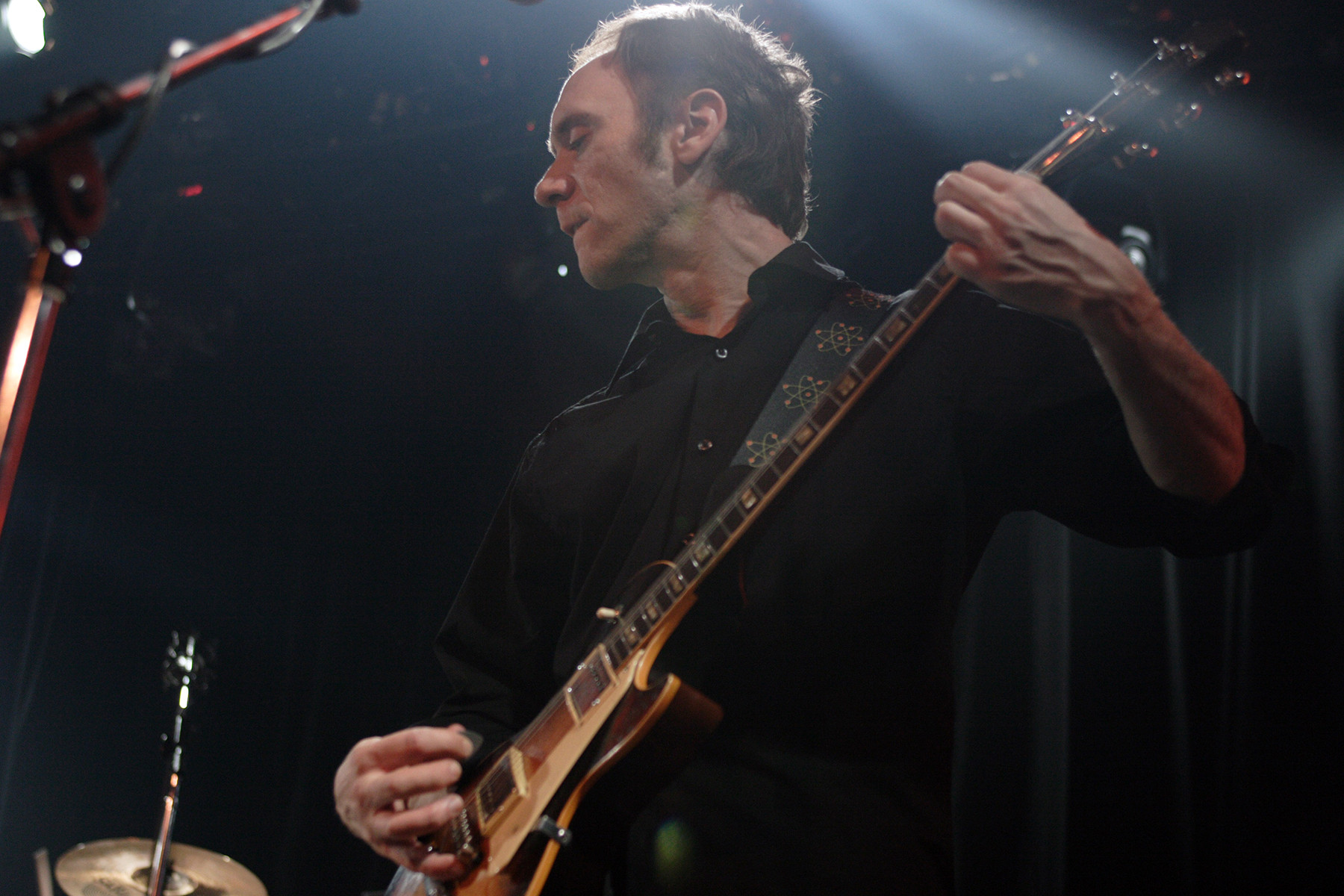 Doug Gillard of Guided By Voices performing live in 2004, showcasing his crucial role in the band's sound and his ability to translate experimental ideas into rock and roll. Image Credit: Matt Carmichael/Getty Images
Doug Gillard of Guided By Voices performing live in 2004, showcasing his crucial role in the band's sound and his ability to translate experimental ideas into rock and roll. Image Credit: Matt Carmichael/Getty Images
Doug Gillard is the musical heart of Guided By Voices. He complements Robert Pollard’s eccentric genius, transforming experimental ideas into rock & roll, often at an astonishing pace. “I know his usual shapes and drones — or can pretty much decipher what they are if it’s a new shape — and replicate them on the rhythm parts on the records for the most part,” Gillard explained. “But also, I have some freedom to transform them.”—B.E.
Key Tracks: “I Am a Tree,” “Mr. Child”
Jennifer Batten
Jennifer Batten rose to fame as Michael Jackson’s guitar hurricane, playing funk, soul, metal, and the “Beat It” solo nightly. Her solo album Above Below and Beyond showcased her range, covering Rimsky-Korsakov to Coltrane with her unique whammy and tapping techniques. She later joined Jeff Beck, proving herself as his peer. —K.G.
Key Tracks: “Flight of the Bumblebee,” “Giant Steps (Rock Version)”
Greg Sage
 Greg Sage of The Wipers performing live in 1986, capturing his intense stage presence and the pioneering punk guitar sound that influenced generations of musicians. Image Credit: Frans Schellekens/Redferns/Getty Images
Greg Sage of The Wipers performing live in 1986, capturing his intense stage presence and the pioneering punk guitar sound that influenced generations of musicians. Image Credit: Frans Schellekens/Redferns/Getty Images
Greg Sage formed the Wipers in 1977, defying punk conventions with complex songs and a distorted guitar sound. At a time of simplicity, Wipers songs like “When It’s Over” were sonic landscapes, galvanizing the Pacific Northwest indie scene. “We learned everything from the Wipers,” Kurt Cobain stated. “They were playing a mix of punk and hard rock when nobody cared.”—Z.Y.
Key Tracks: “When It’s Over,” “Up Front”
Laura Marling
Laura Marling is a subtle guitar virtuoso, using complex tunings that sound deceptively simple. “I Was an Eagle” exemplifies this, with DADDAD tuning creating a dreamy atmosphere, echoing Joni Mitchell’s influence. Marling shared her guitar insights with fans during lockdown, offering tutorials on Instagram.—B.M
Key Tracks: “I Was an Eagle,” “Wild Fire,” “Ghosts”
John McGeoch
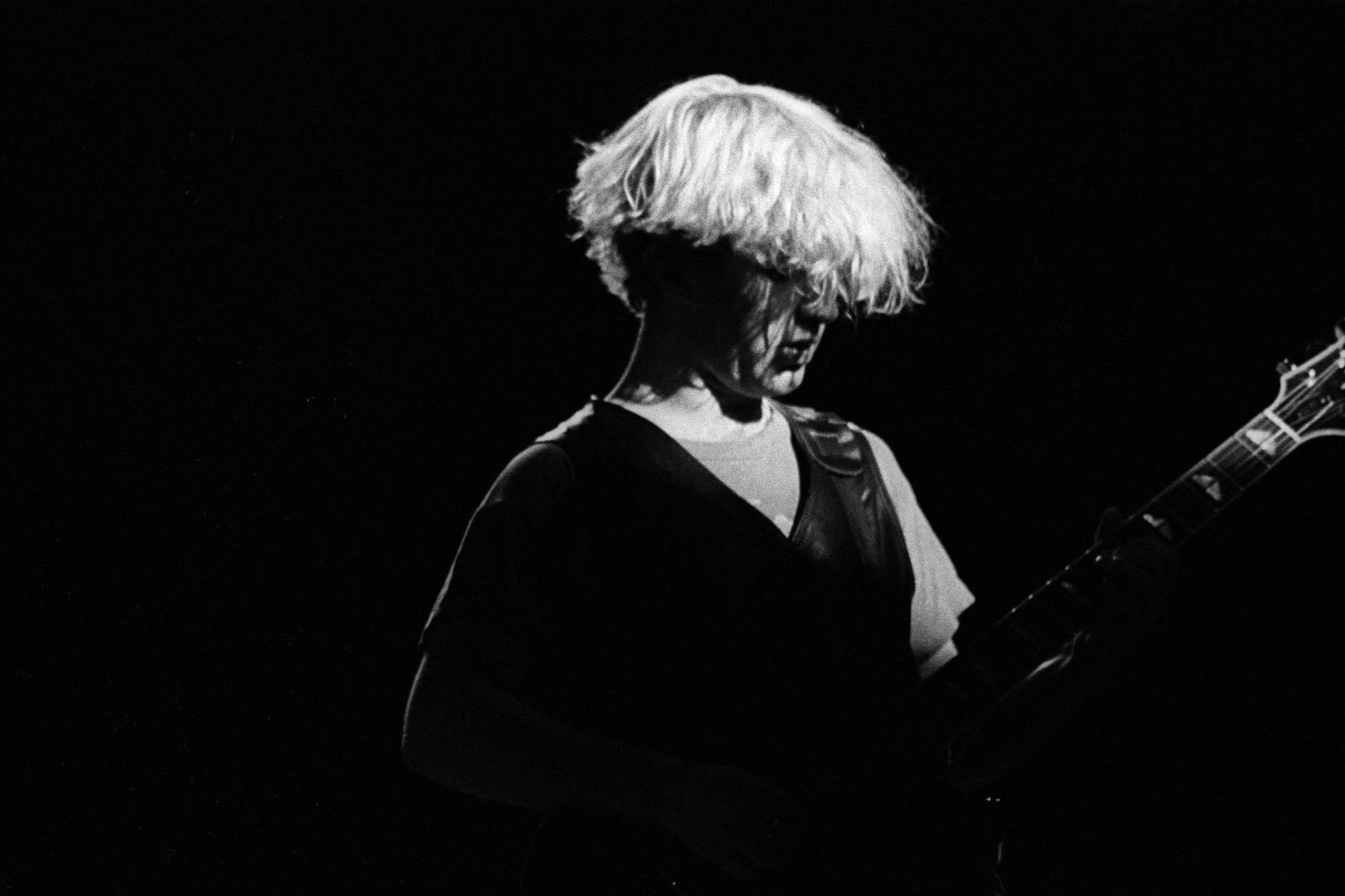 John McGeoch of Siouxsie and the Banshees performing live in 1980, demonstrating his innovative and atmospheric guitar style that defined goth-rock and influenced countless guitarists. Image Credit: Ebet Roberts/Redferns
John McGeoch of Siouxsie and the Banshees performing live in 1980, demonstrating his innovative and atmospheric guitar style that defined goth-rock and influenced countless guitarists. Image Credit: Ebet Roberts/Redferns
John McGeoch burst onto the scene with Magazine’s “Shot by Both Sides” in 1978, then developed an expansive style with Magazine, Public Image Ltd, and Siouxsie and the Banshees. Praised by Johnny Marr and Ed O’Brien, his blend of rhythm guitar, flange, and arpeggios on Juju defined Eighties goth-guitar, prioritizing atmosphere over angst.—J.D.
Key Tracks: “Philadelphia,” “Spellbound”
H.E.R.
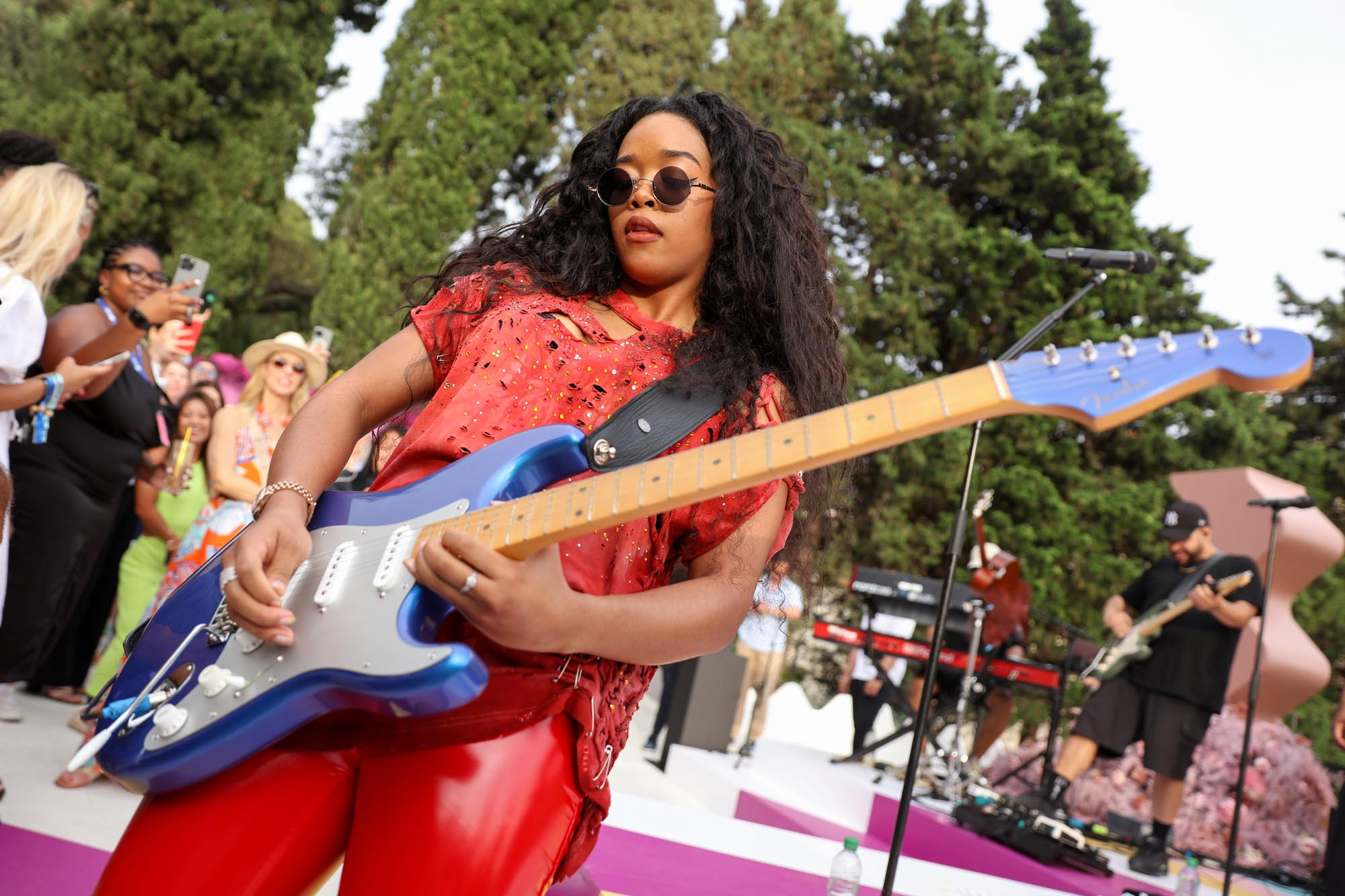 H.E.R. performing at Spotify event, showcasing her multifaceted talent as a vocalist and guitarist, seamlessly blending R&B with rock guitar virtuosity. Image Credit: David M. Benett/Getty Images
H.E.R. performing at Spotify event, showcasing her multifaceted talent as a vocalist and guitarist, seamlessly blending R&B with rock guitar virtuosity. Image Credit: David M. Benett/Getty Images
H.E.R. surprises with each performance, blending classic R&B vocals with guitar playing ranging from delicate accents to Prince-like shredding. “Hold On” features her signature squealing leads. “I also like to play my guitar like I’m singing,” she told Guitar World. Fender created a signature Stratocaster for her in 2021, a historic moment.—J.F.
Key Tracks: “Hold On,” “Comfortable”
David Williams
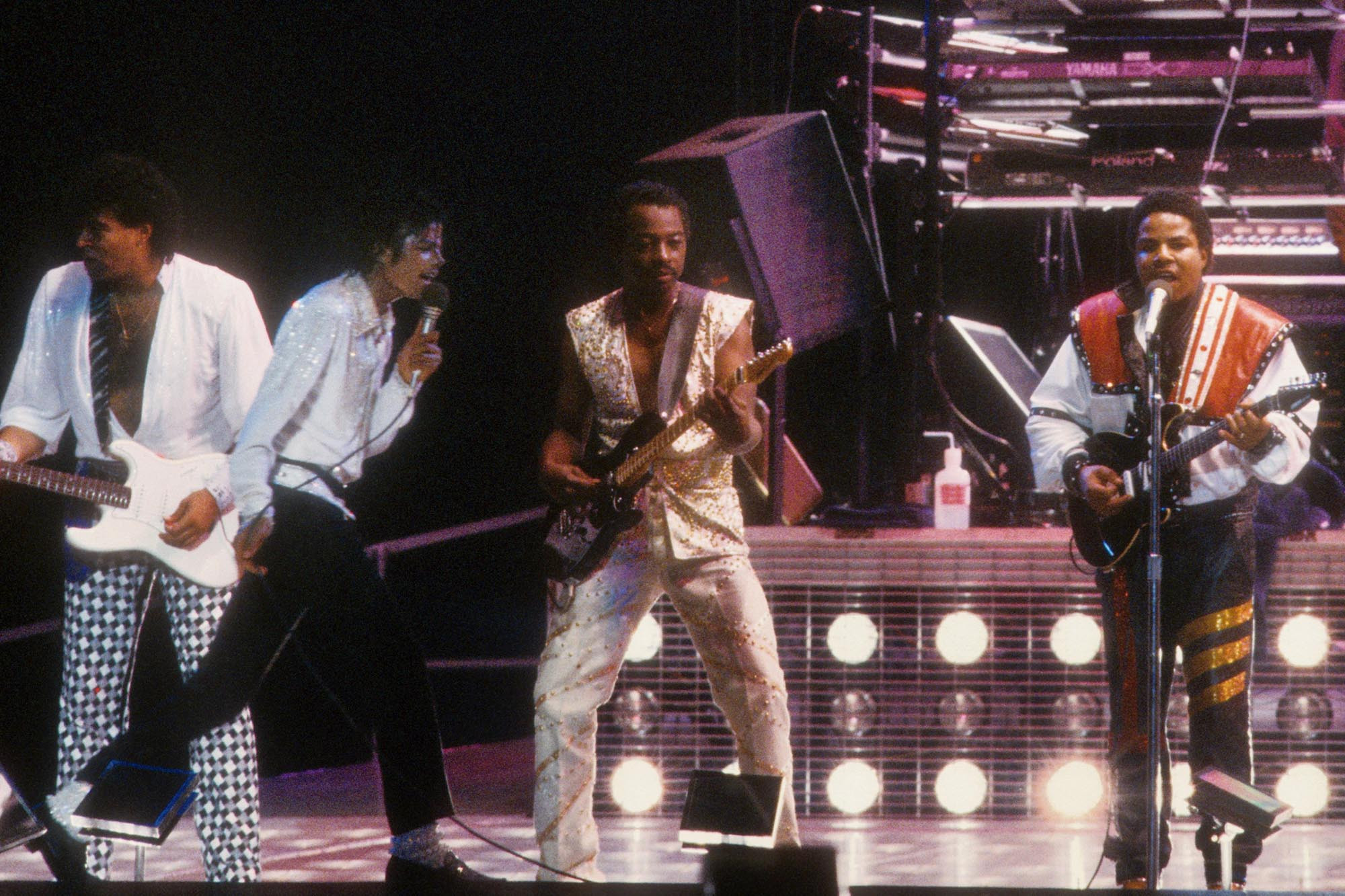 David Williams of The Jacksons performing live in 1984, highlighting his essential rhythmic guitar contributions to iconic pop hits and his session guitar mastery. Image Credit: Michael Ochs Archive/Getty Images
David Williams of The Jacksons performing live in 1984, highlighting his essential rhythmic guitar contributions to iconic pop hits and his session guitar mastery. Image Credit: Michael Ochs Archive/Getty Images
David Williams, though jazz-loving, impacted Eighties pop. His sparse guitar touches are key to Michael Jackson’s “Billie Jean,” Stevie Nicks’ “Stand Back,” and Diana Ross’ “Muscles.” He toured with Jackson and Madonna and worked with Chaka Khan to Kenny Loggins. His “secret spice” for hits was subtlety: “You don’t need much of it, but the right amount gets the job done.” Williams passed away in 2009 at 58.—C.S.
Key Tracks: “Billie Jean,” “Dirty Diana”
Etta Baker
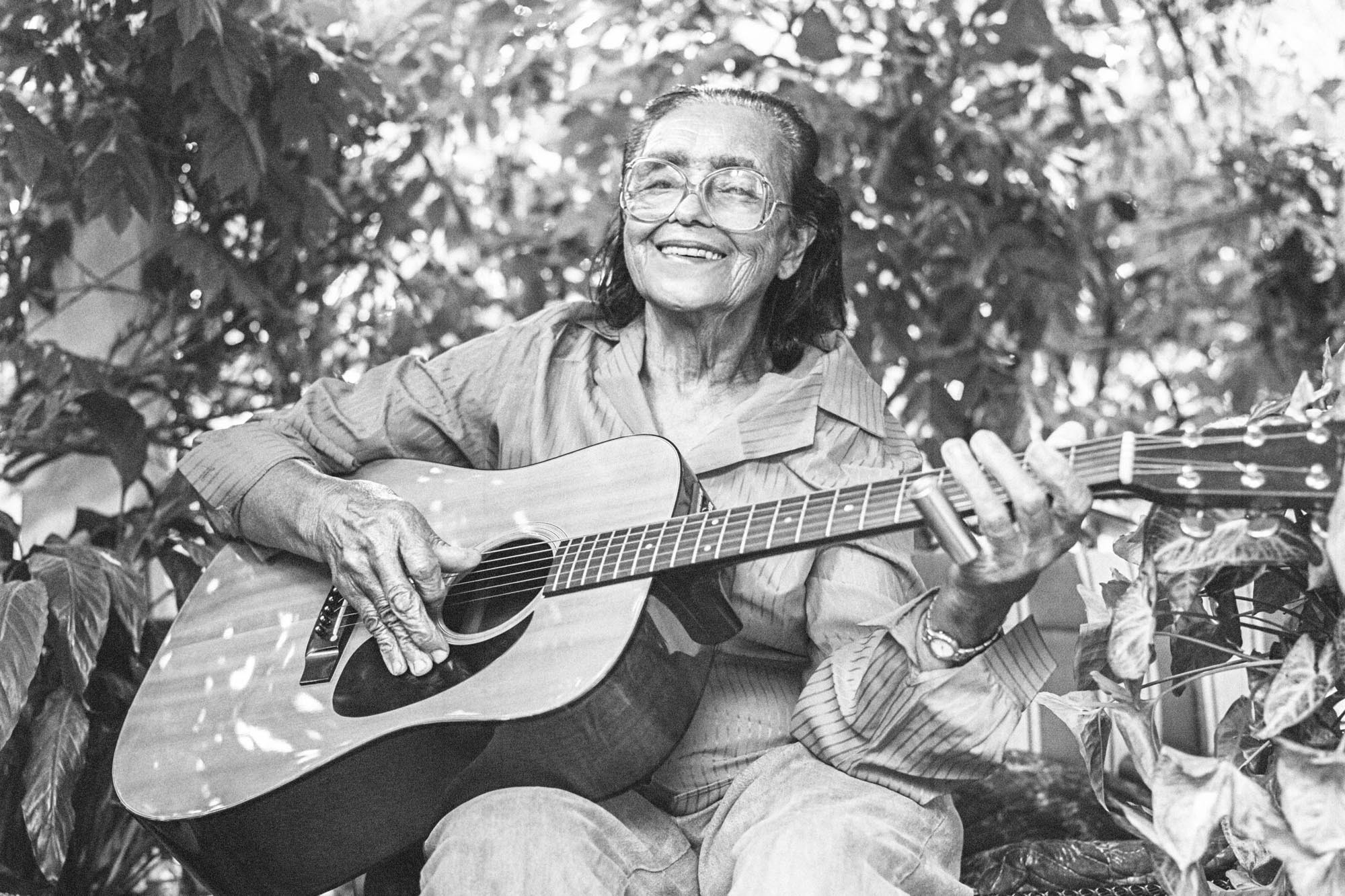 Etta Baker in a portrait, capturing her legendary status as a Piedmont blues guitarist and her profound influence on folk and blues music. Image Credit: Timothy Duffy
Etta Baker in a portrait, capturing her legendary status as a Piedmont blues guitarist and her profound influence on folk and blues music. Image Credit: Timothy Duffy
Etta Baker is synonymous with Piedmont blues, a ragtime-folk style. Born in 1913, she learned guitar from her father and played dances as a child. Her compositions like “One Dime Blues” from 1956 were influential, inspiring Bob Dylan and Taj Mahal. Taj Mahal recorded an album with Baker before her 2006 death. —J.F.
Key Tracks: “One Dime Blues,” “Carolina Breakdown”
Gustavo Cerati
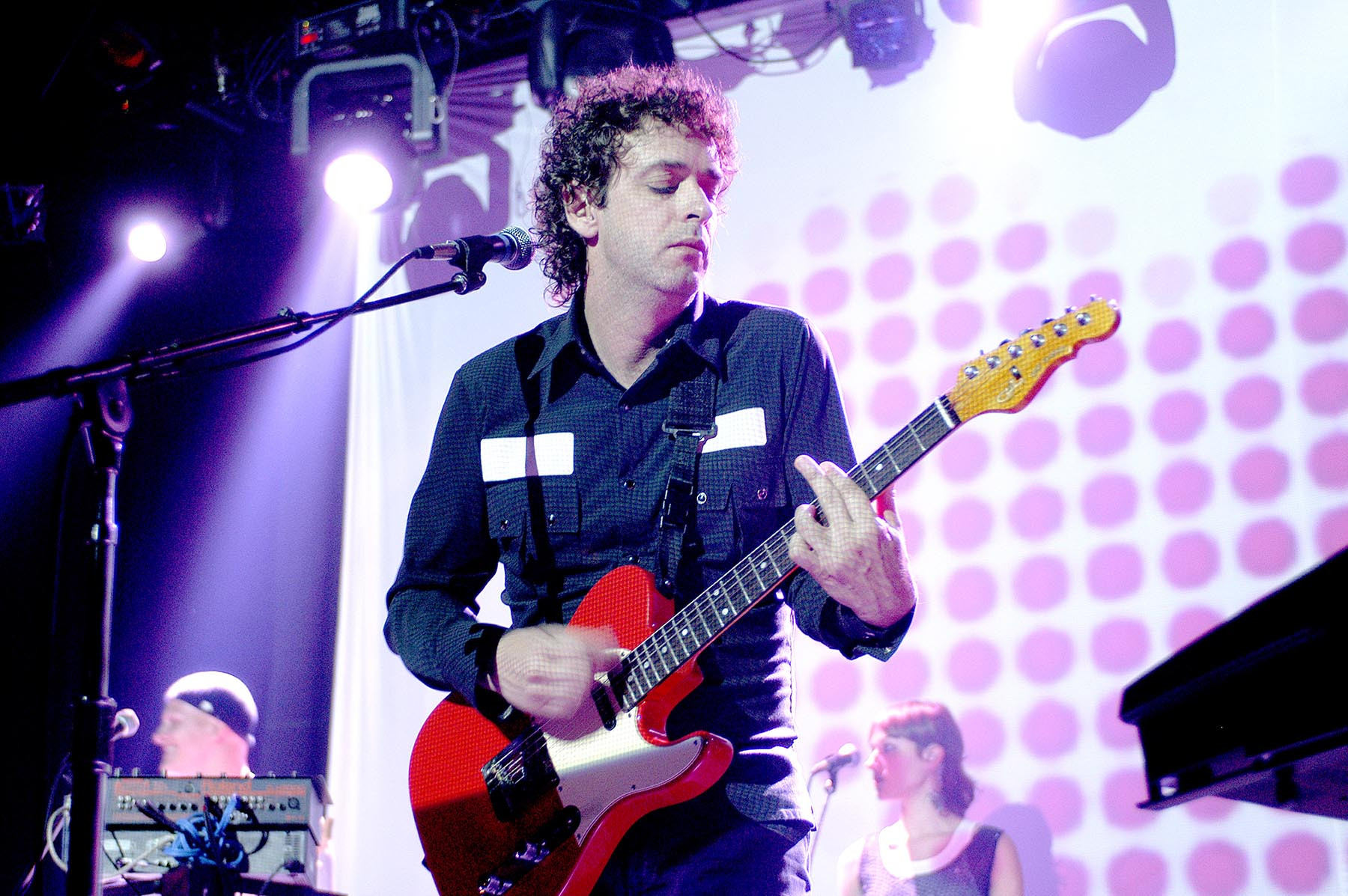 Gustavo Cerati performing live in 2003, showcasing his guitar prowess and his transformative impact on Latin rock music with Soda Stereo and his solo work. Image Credit: Paul Natkin/Getty Images
Gustavo Cerati performing live in 2003, showcasing his guitar prowess and his transformative impact on Latin rock music with Soda Stereo and his solo work. Image Credit: Paul Natkin/Getty Images
Gustavo Cerati transformed Latin rock with his songs and extraordinary guitar playing. With Soda Stereo, he launched a pan-American rock en español boom with hits like “De Música Ligera.” After Soda Stereo, he explored electronic music but returned to guitar-god mode with Ahí Vamos in 2006. Cerati passed away after a coma at 50, but his guitar legacy endures in Latin music culture. —E.L.
Key Tracks: “Canción Animal,” “La Excepción”
Barbara Lynn
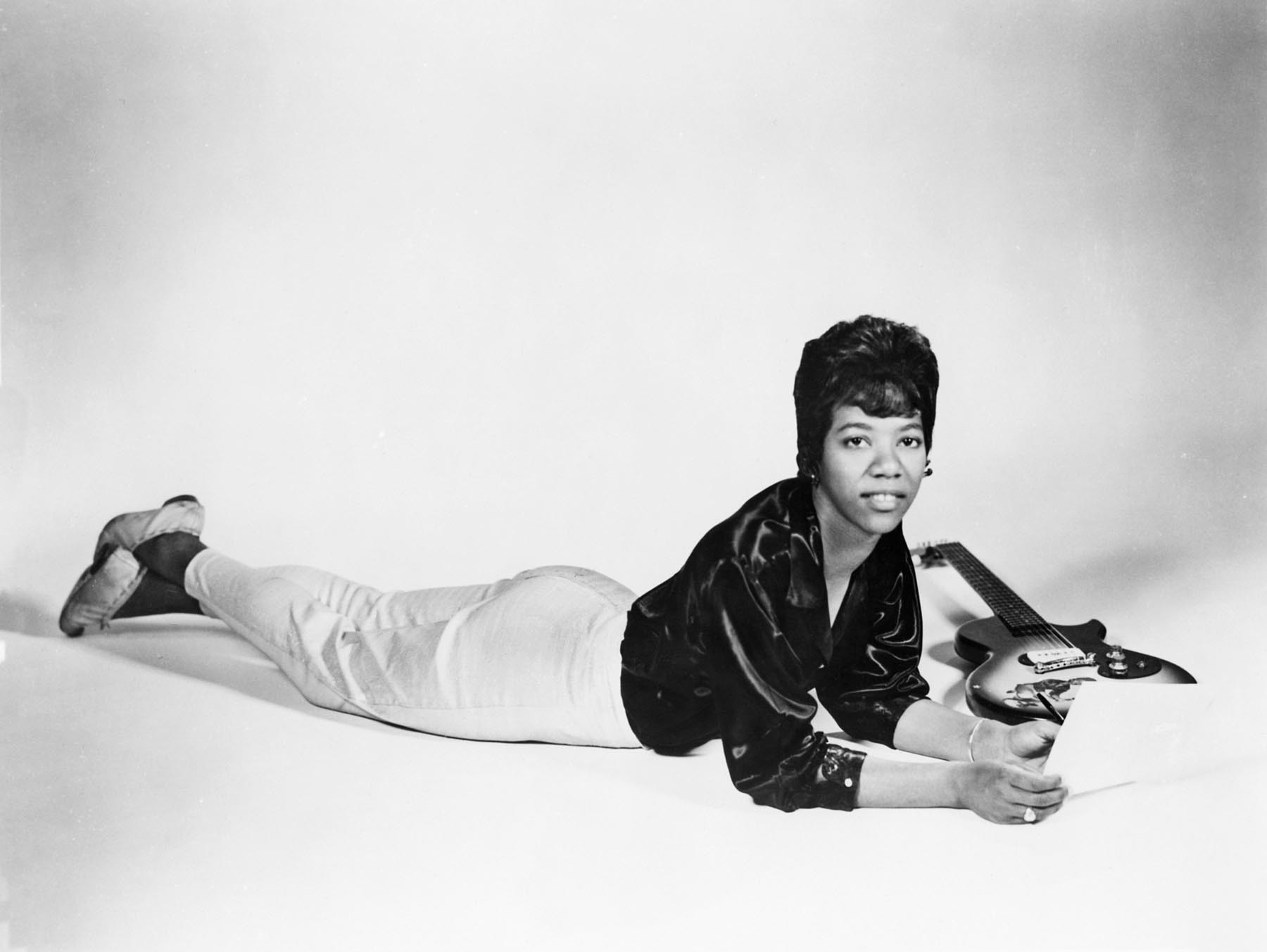 Barbara Lynn in a 1964 portrait, a pioneering female guitarist and R&B singer whose left-handed playing and songwriting influenced generations. Image Credit: Michael Ochs Archives/Getty Images
Barbara Lynn in a 1964 portrait, a pioneering female guitarist and R&B singer whose left-handed playing and songwriting influenced generations. Image Credit: Michael Ochs Archives/Getty Images
Barbara Lynn, at 16, penned “You’ll Lose a Good Thing,” a 1962 R&B number one hit. Playing a right-handed guitar left-handed, self-taught, she launched a 60-year career. Her songs have been covered by the Rolling Stones, Aretha Franklin, and sampled by the Beastie Boys, a testament to her relatable songwriting and guitar artistry.—C.S.
Key Tracks: “You’ll Lose a Good Thing,” “I’ll Suffer”
Steve Jones
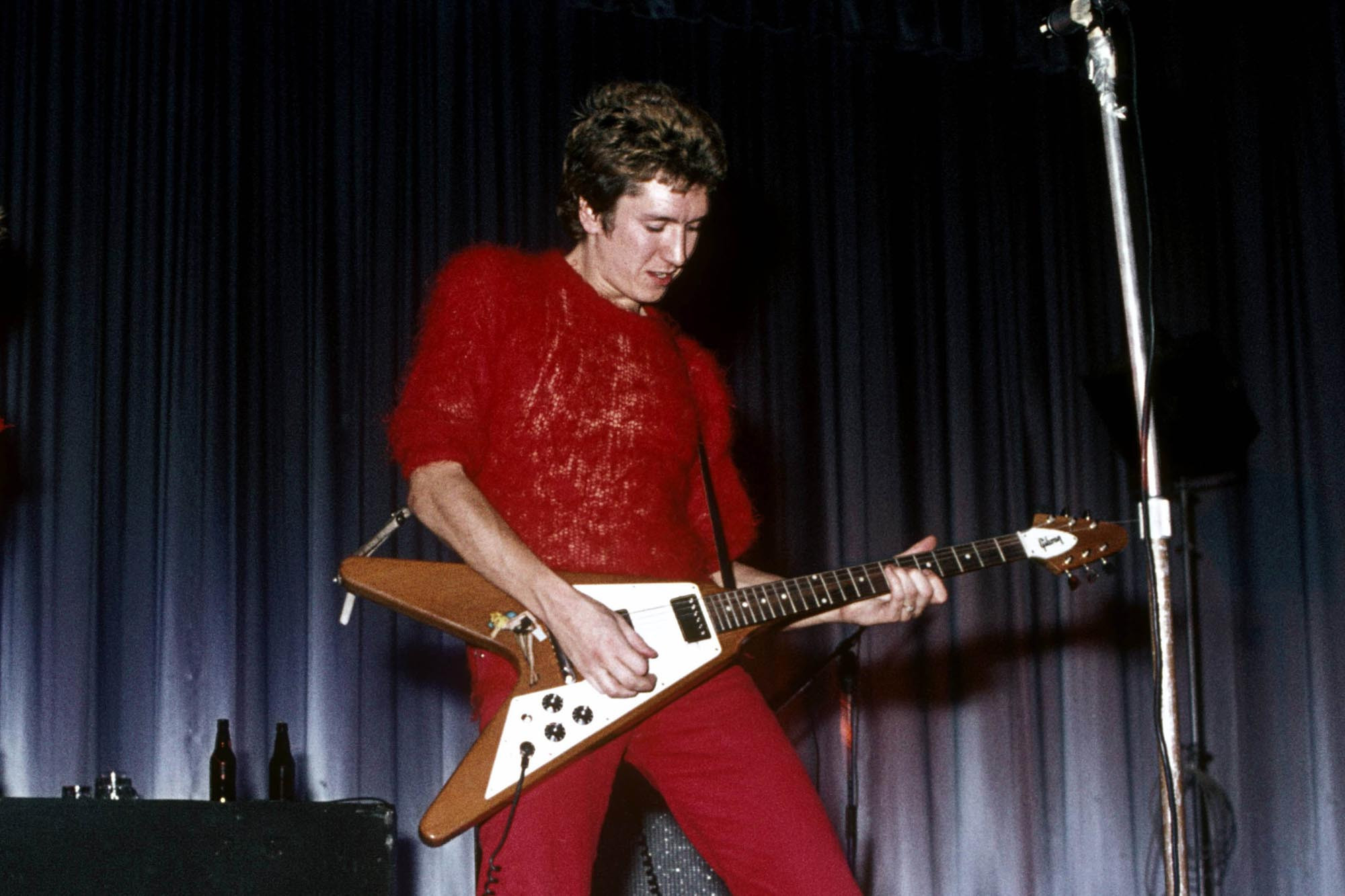 Steve Jones of the Sex Pistols performing live, playing his iconic Gibson Les Paul and embodying the raw energy and rebellious spirit of punk rock guitar. Image Credit: Chris Morphet/Redferns/Getty Images
Steve Jones of the Sex Pistols performing live, playing his iconic Gibson Les Paul and embodying the raw energy and rebellious spirit of punk rock guitar. Image Credit: Chris Morphet/Redferns/Getty Images
Steve Jones of the Sex Pistols, with his white Les Paul, became a punk icon. His power chords and glam-infused solos mirrored Johnny Rotten’s rebellious stance. Never Mind the Bollocks… (1977) became his legacy, inspiring guitarists from Slash to Billie Joe Armstrong. His attitude was as impactful as his sound: “Actually, we’re not into music. We’re into chaos.”—W.H.
Key Tracks: “God Save the Queen,” “Pretty Vacant”
Glenn Branca
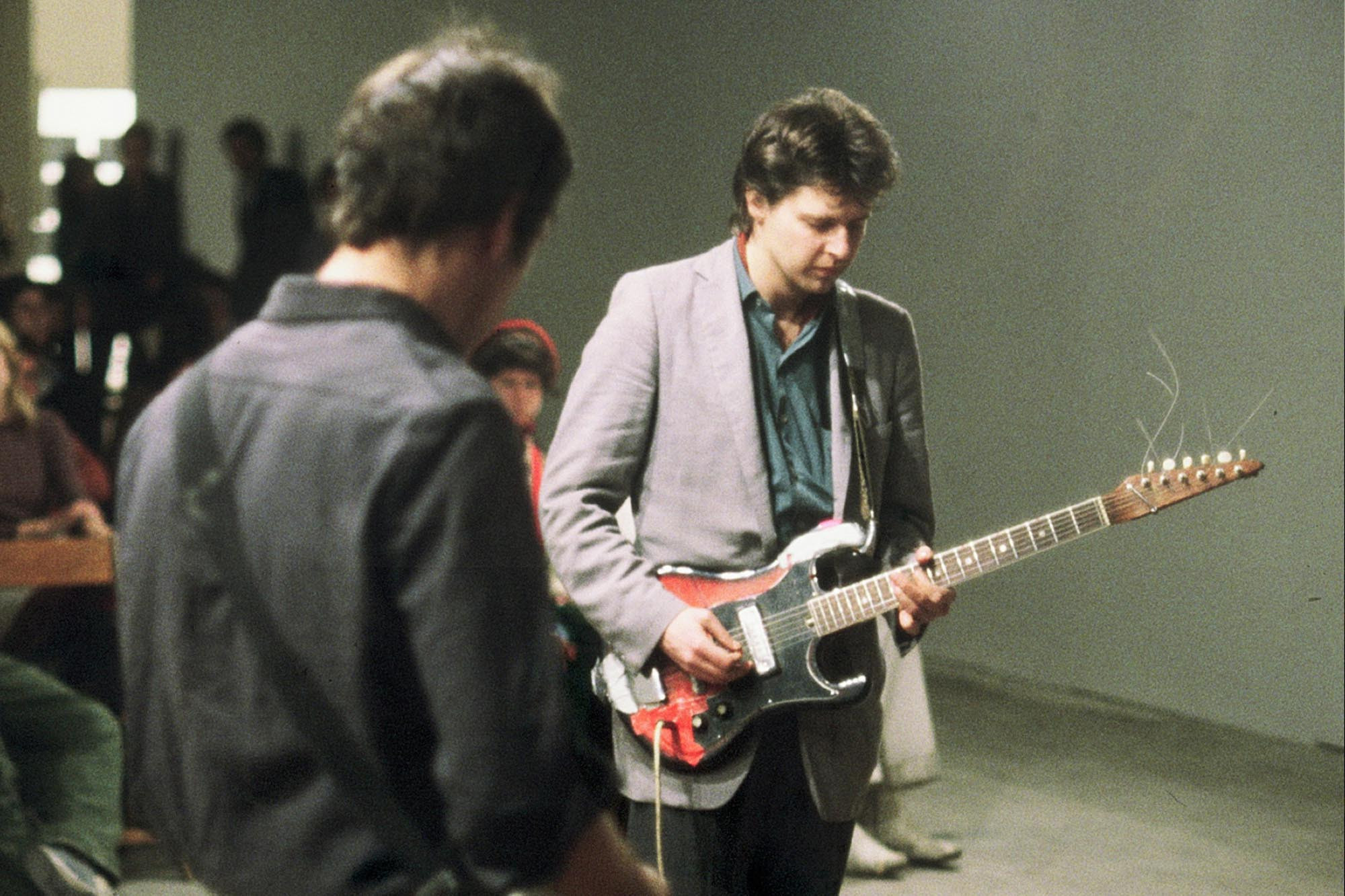 Glenn Branca in a portrait, capturing his avant-garde approach to guitar and his pioneering work in No Wave and symphonic guitar compositions. Image Credit: Hallwalls Archive/CC BY 3.0
Glenn Branca in a portrait, capturing his avant-garde approach to guitar and his pioneering work in No Wave and symphonic guitar compositions. Image Credit: Hallwalls Archive/CC BY 3.0
Glenn Branca, a No Wave pillar, redefined the guitar as a symphonic instrument. He composed for guitar ensembles of up to 100 players, using custom tunings and modifications. His Symphony No. 1 (1981) featured Thurston Moore and Lee Ranaldo of Sonic Youth. Branca also released Sonic Youth’s first album, showcasing his revolutionary vision. “If I lived to 200, I wouldn’t finish my work.”—T.B.
Key Tracks: “Light Field (In Consonance),” “Velvets and Pearls”
El Kempner
 El Kempner of Palehound performing live, showcasing their versatile guitar skills and their rise as a prominent figure in indie rock. Image Credit: Craig F. Walker/The Boston Globe/Getty Images
El Kempner of Palehound performing live, showcasing their versatile guitar skills and their rise as a prominent figure in indie rock. Image Credit: Craig F. Walker/The Boston Globe/Getty Images
El Kempner of Palehound started playing guitar at seven. Guitar became their guiding force, with electrifying riffs on tracks like “The Clutch.” Kempner’s versatility shines on Stratocaster rock-outs, acoustic fingerpicking, and swirling arpeggios.—M. Georgi
Key Tracks: “The Clutch,” “Independence Day”
Fred ‘Sonic’ Smith and Wayne Kramer
 Wayne Kramer and Fred "Sonic" Smith of MC5 performing live in 1969, demonstrating their powerful twin-guitar synergy that defined proto-punk and high-energy rock music. Image Credit: Leni Sinclair/Michael Ochs Archive/Getty Images
Wayne Kramer and Fred "Sonic" Smith of MC5 performing live in 1969, demonstrating their powerful twin-guitar synergy that defined proto-punk and high-energy rock music. Image Credit: Leni Sinclair/Michael Ochs Archive/Getty Images
MC5’s guitar duo Wayne Kramer and Fred “Sonic” Smith, forged in Detroit, were like engine pistons. Blending Chuck Berry, Motown, and free jazz, they propelled high-energy jams while maintaining groove. “If you play with another guitar player long enough, you exhaust everything you know, and then you start playing what you don’t know, and you get into something good,” Kramer said. Their synchronized rhythm and solo playing became their signature.—D.E.
Key Tracks: “Looking at You,” “Poison”
Marv Tarplin
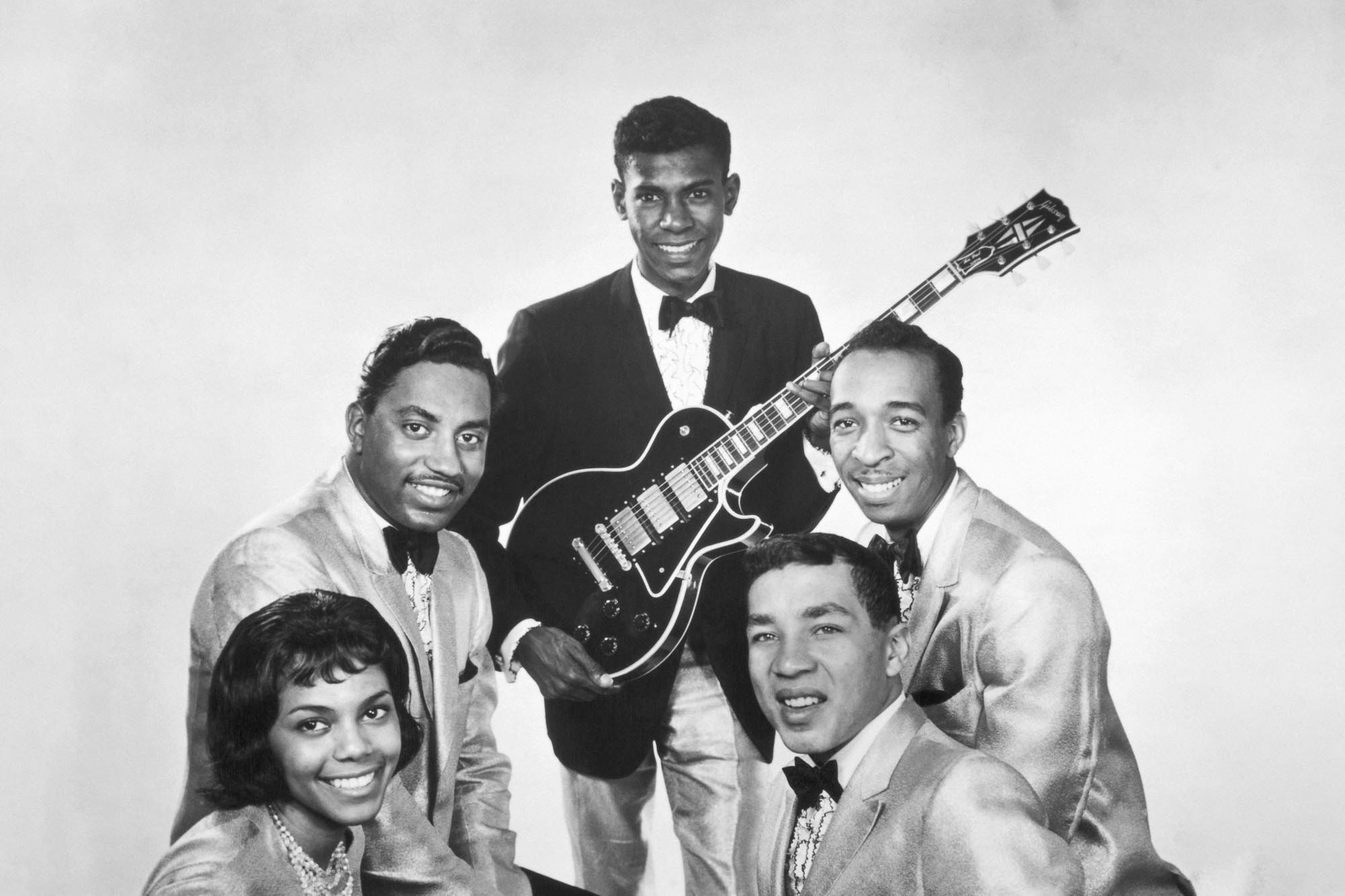 Marv Tarplin of Smokey Robinson and The Miracles in a 1962 portrait, capturing his essential role in shaping Motown's sound with his versatile and melodic guitar playing. Image Credit: Michael Ochs Archives/Getty Images
Marv Tarplin of Smokey Robinson and The Miracles in a 1962 portrait, capturing his essential role in shaping Motown's sound with his versatile and melodic guitar playing. Image Credit: Michael Ochs Archives/Getty Images
Marv Tarplin’s guitar playing and composing were crucial to Smokey Robinson and the Miracles. His versatility spanned driving chords on “Going to a Go-Go” to 12-string acoustic on “You Really Got a Hold on Me.” His chord exploration led to “The Tracks of My Tears.” His delicate guitar work on Robinson’s “Cruisin’” contributed to its timeless appeal.—M.J.
Key Tracks: “The Tracks of My Tears,” “Cruisin’”
Joseph Spence
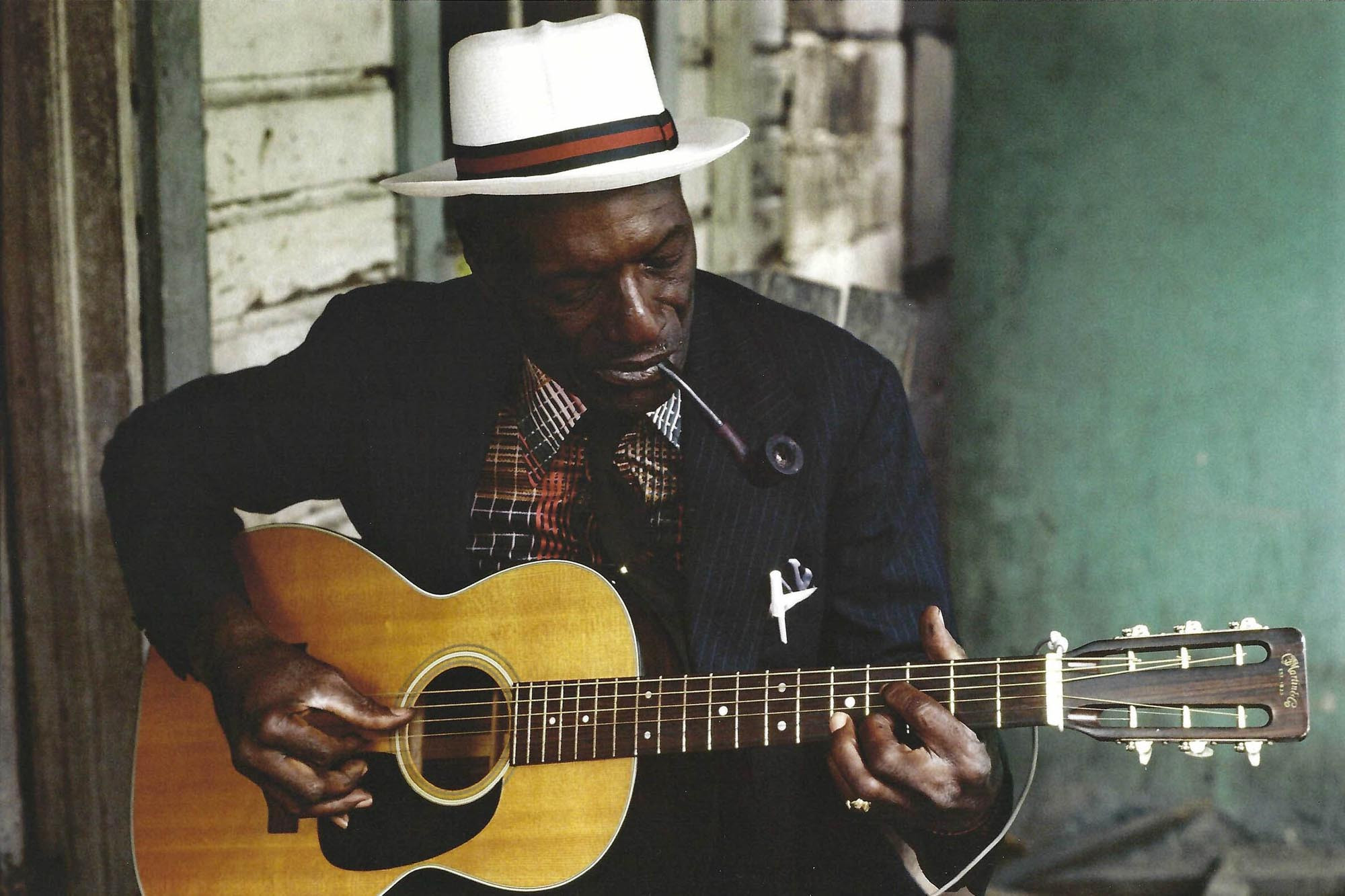 Joseph Spence in a portrait, capturing the legendary Bahamian guitarist whose unique fingerpicking style profoundly influenced folk and beyond. Image Credit: Guy Droussart
Joseph Spence in a portrait, capturing the legendary Bahamian guitarist whose unique fingerpicking style profoundly influenced folk and beyond. Image Credit: Guy Droussart
Joseph Spence’s guitar playing was so rich, musicologists initially thought they heard two guitarists. His pointillistic fingerpicking across blues, spirituals, and calypso influenced folk and more. The Grateful Dead covered his “We Bid You Goodnight,” and the Beach Boys’ “Sloop John B” was inspired by Spence’s version. —J.D.
Key Tracks: “Brownskin Girl,” “Jump in the Line”
Molly Tuttle
 Molly Tuttle performing live, showcasing her groundbreaking bluegrass guitar skills and her role in pushing the boundaries of roots music. Image Credit: Scott Dudelson/Getty Images
Molly Tuttle performing live, showcasing her groundbreaking bluegrass guitar skills and her role in pushing the boundaries of roots music. Image Credit: Scott Dudelson/Getty Images
Molly Tuttle, a bluegrass innovator, and her band Golden Highway are making roots music history. Her flatpicking, influenced by Tony Rice to Joni Mitchell, honors tradition while pushing boundaries. She became the first bluegrass act nominated for Best New Artist Grammy, signifying bluegrass’s evolution. “Our generation of bluegrass players are really pushing in some new directions,” Tuttle stated. “I feel lucky to be part of this scene that’s breaking down barriers.”—C.M.
Key Tracks: ‘Take the Journey,” “El Dorado”
James Blood Ulmer
 James Blood Ulmer in a portrait, capturing his innovative and genre-bending guitar style that fused blues, funk, and jazz, influencing experimental music scenes. Image Credit: Peter Noble/Redferns
James Blood Ulmer in a portrait, capturing his innovative and genre-bending guitar style that fused blues, funk, and jazz, influencing experimental music scenes. Image Credit: Peter Noble/Redferns
James Blood Ulmer fused soul jazz, free jazz, blues, and funk into a unique guitar style. His albums like Tales of Captain Black influenced the downtown New York experimental scene. Vernon Reid called him “unapologetically himself. He is the blues. Itself. Not its rules.” —J.G.
Key Tracks: “Theme from Captain Black,” “Timeless”
Courtney Barnett
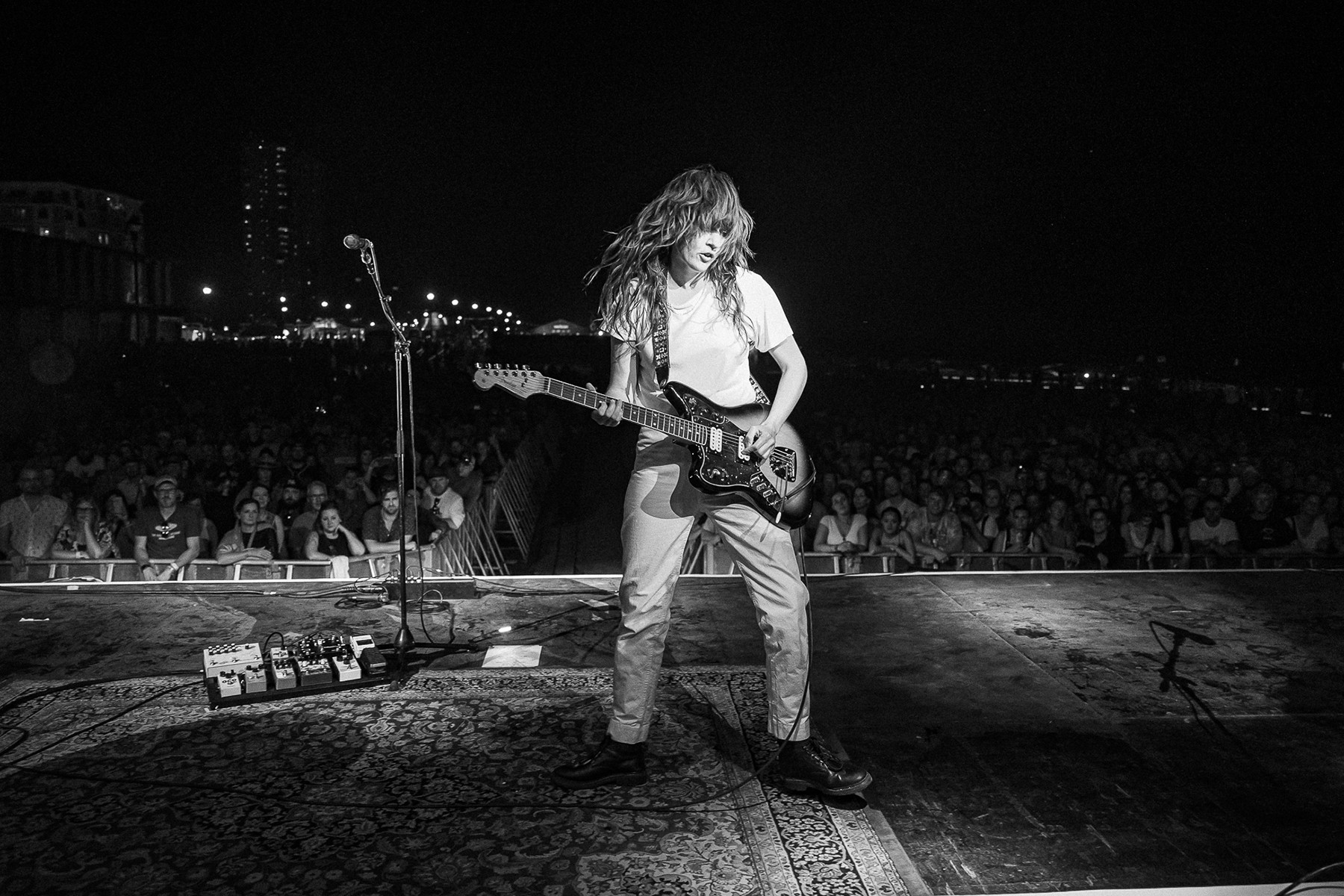 Courtney Barnett performing live, showcasing her dynamic guitar playing and her ability to blend intricate fingerpicking with garage rock energy. Image Credit: Griffin Lotz for Rolling Stone
Courtney Barnett performing live, showcasing her dynamic guitar playing and her ability to blend intricate fingerpicking with garage rock energy. Image Credit: Griffin Lotz for Rolling Stone
Courtney Barnett’s guitar playing shifts between fingerpicking and garage-rock solos, enhancing her storytelling. “It sounds like you’re driving across a highway and it’s sunny,” Barnett said of “Write a List of Things to Look Forward To.” Her collaboration with Kurt Vile on Lotta Sea Lice highlights their guitar chemistry.—L.L.
Key Tracks: “Turning Green,” “Over Everything,” “Pedestrian at Best”
Glenn Tipton and K.K. Downing
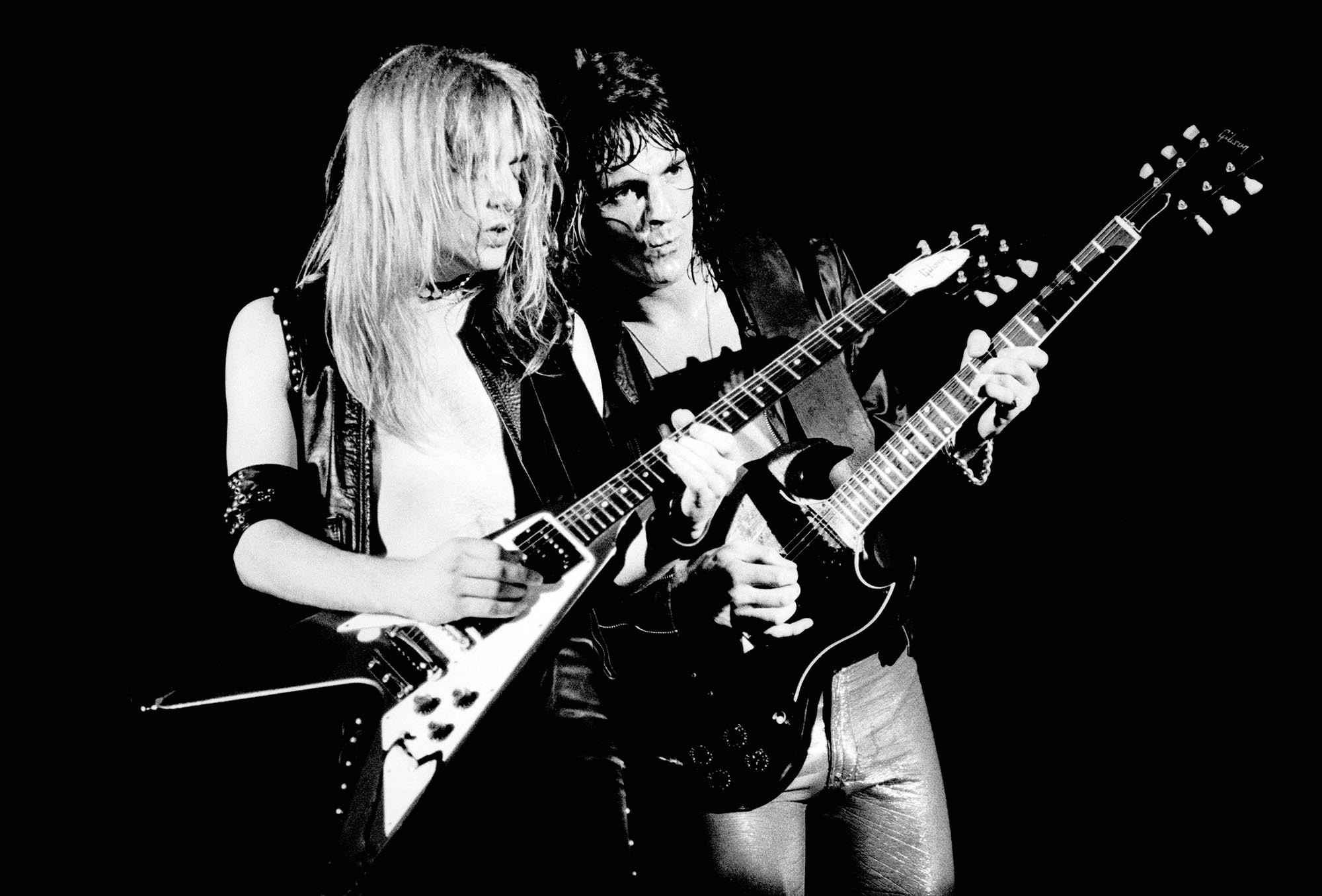 K.K. Downing and Glenn Tipton of Judas Priest performing live in 1978, demonstrating their iconic twin-guitar attack that redefined heavy metal and influenced generations of guitarists. Image Credit: Gus Stewart/Redferns
K.K. Downing and Glenn Tipton of Judas Priest performing live in 1978, demonstrating their iconic twin-guitar attack that redefined heavy metal and influenced generations of guitarists. Image Credit: Gus Stewart/Redferns
Judas Priest, with guitarists K.K. Downing and Glenn Tipton, redefined heavy metal with two guitars. They doubled riffs, traded solos, and embraced harmony leads, setting the template for Iron Maiden, Metallica, and Slayer. Kerry King noted, “If it’s Tipton, it’s super-fucking tasty. If it’s K.K., it’s a more edgy, almost punky kind of vibe, which is a great mix.” —K.G.
Key Tracks: “Victim of Changes,” “Breaking the Law,” “The Hellion/Electric Eye”
Lzzy Hale
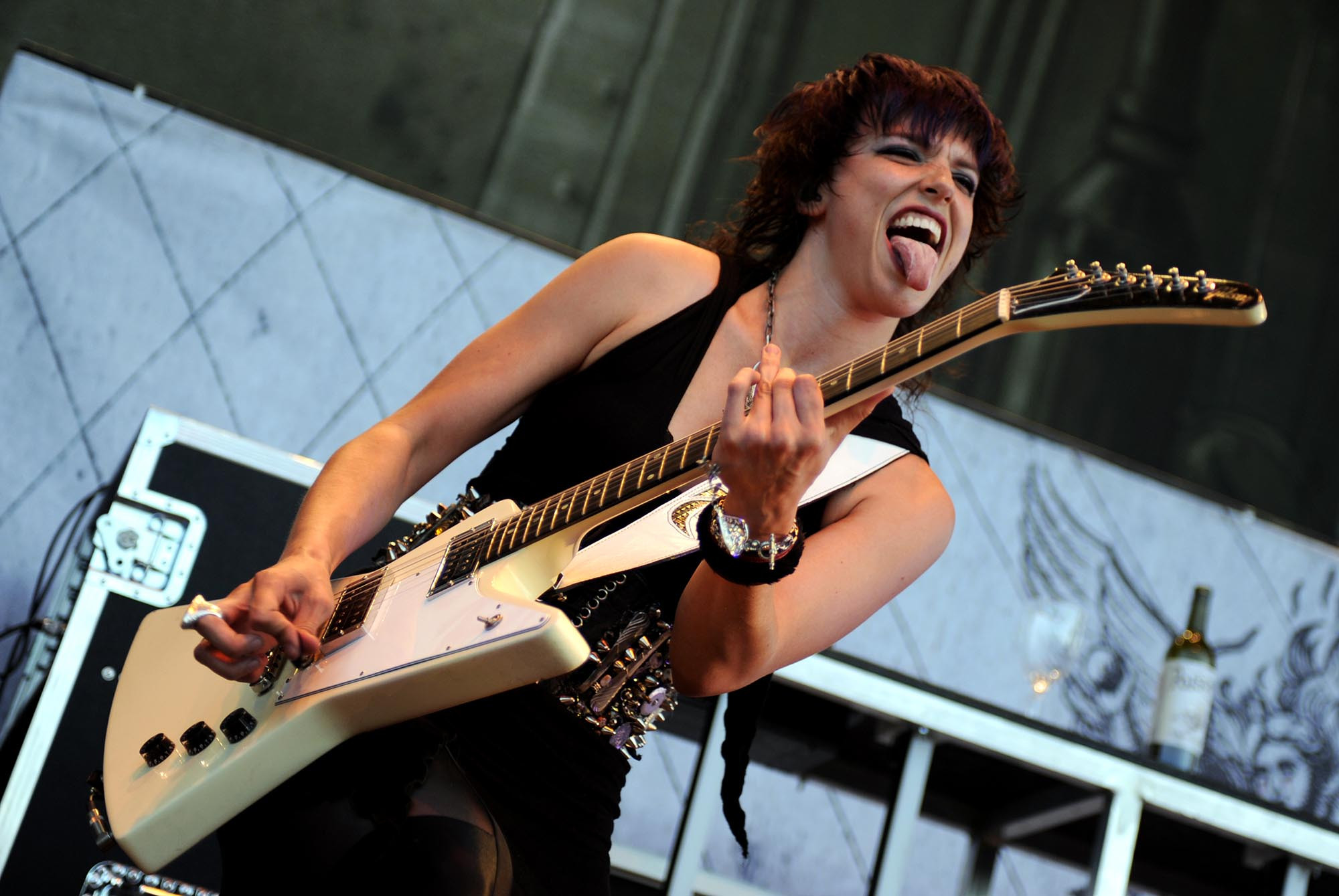 Lzzy Hale of Halestorm performing live, showcasing her powerful vocals and fierce guitar playing that make her a modern icon of hard rock guitar. Image Credit: Tim Mosenfelder/Getty Images
Lzzy Hale of Halestorm performing live, showcasing her powerful vocals and fierce guitar playing that make her a modern icon of hard rock guitar. Image Credit: Tim Mosenfelder/Getty Images
Lzzy Hale of Halestorm is a hard rock goddess, known for her voice and aggressive guitar style. She shreds and uses a rhythmic slap style. Gibson made her their first female brand ambassador, designing a signature Explorer model. “The people at Gibson keep telling me the demographic that buys the most electric guitars right now are female,” Hale said. “The wave is coming whether anybody likes it or not.”—J.H.
Key Tracks: “I Miss the Misery,” “The Steeple”
Thomas McClary
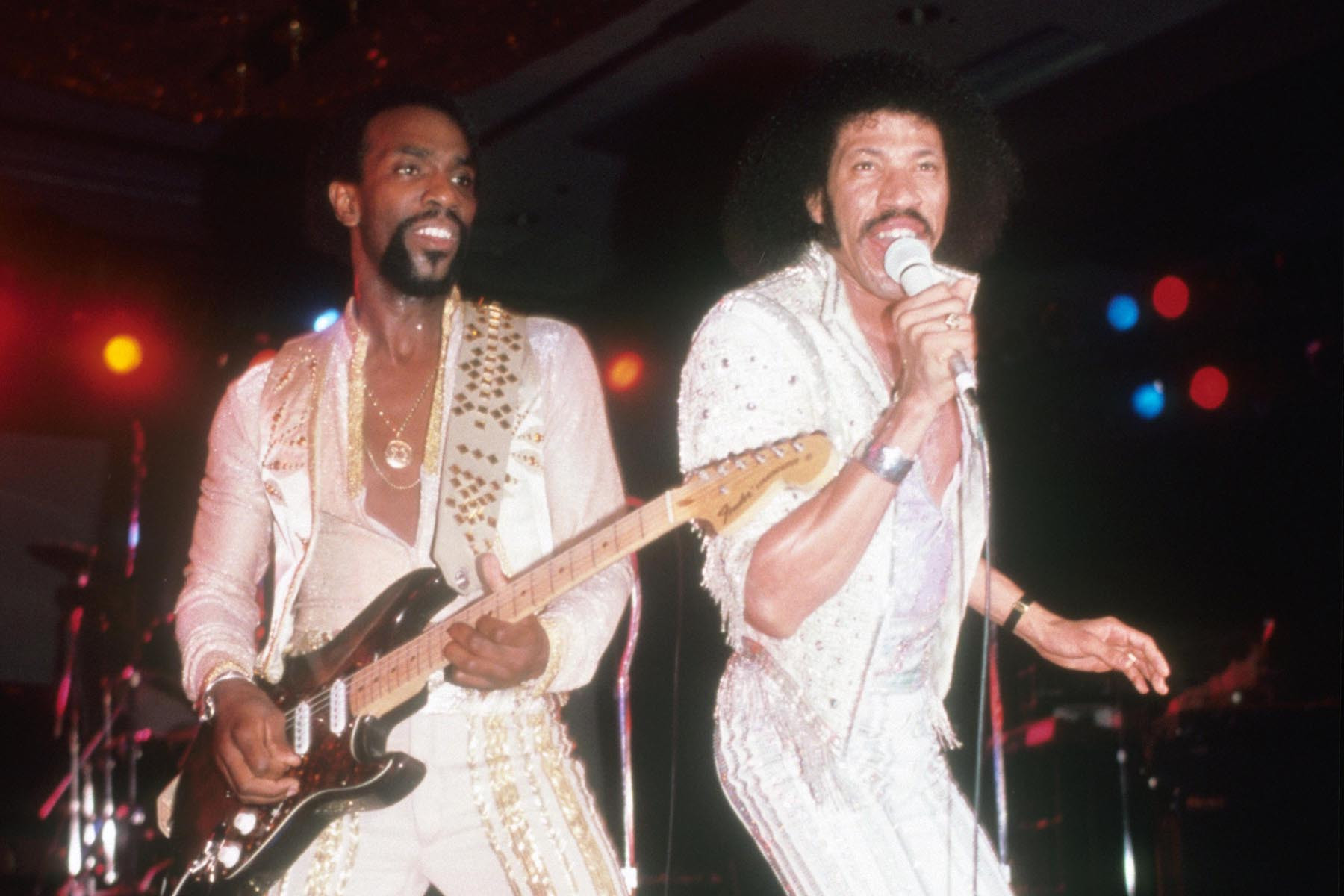 Thomas McClary of The Commodores in a 1978 performance, showcasing his blend of funk, soul, and rock guitar that helped define the band's crossover sound. Image Credit: Alamy
Thomas McClary of The Commodores in a 1978 performance, showcasing his blend of funk, soul, and rock guitar that helped define the band's crossover sound. Image Credit: Alamy
Thomas McClary of the Commodores blended funk, soul, gospel, and country, appealing to diverse audiences. His glam and blues-infused guitar on songs like “Easy” shaped their crossover sound. He drew inspiration from Santana, Hendrix, Albert King, and Crosby, Stills, Nash & Young, aiming for a “raunchy, raw, authentic sound.” —C.S.
Key Tracks: “Easy,” “Brick House”
Steve Hackett
Steve Hackett joined Genesis in 1971, introducing two-hand tapping, captured on Nursery Crime, predating Van Halen. His epic solo on “Firth of Fifth” is prog-rock masterpiece. He left Genesis in 1977 for a solo career. “I’m very happy to have freed up guitarists to play dazzling solos,” Hackett reflected.—A.G.
Key Tracks: “Horizons,” “Firth of Fifth”
Kurt Vile
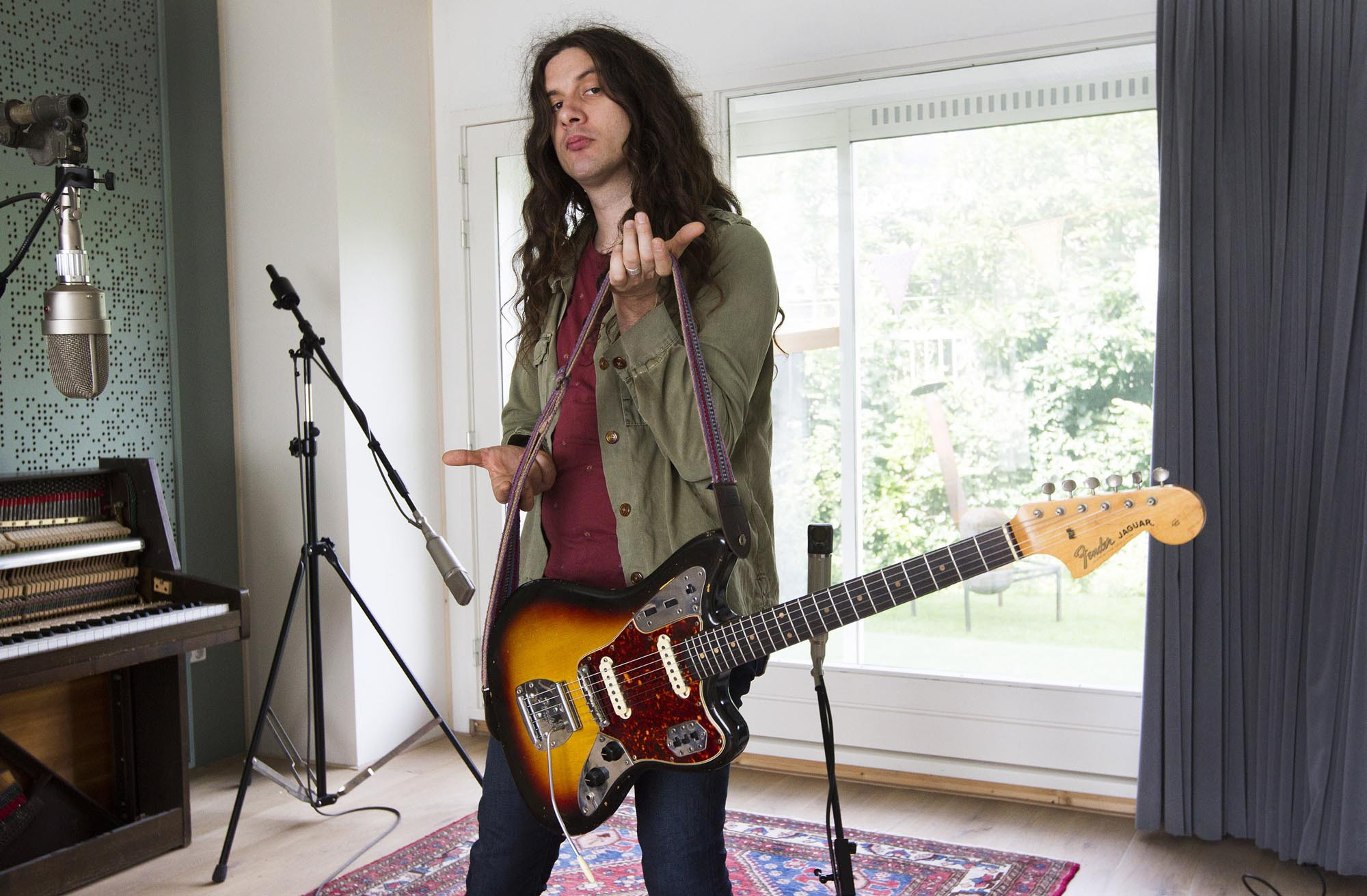 Kurt Vile in a portrait, capturing his relaxed persona and subtly virtuosic guitar style that blends drones and melodic solos, influenced by his banjo beginnings. Image Credit: Paul Bergen/Redferns/Getty Images
Kurt Vile in a portrait, capturing his relaxed persona and subtly virtuosic guitar style that blends drones and melodic solos, influenced by his banjo beginnings. Image Credit: Paul Bergen/Redferns/Getty Images
Kurt Vile’s laid-back demeanor belies his serious guitar skills. His style blends drones and melodic solos, influenced by his early banjo playing. “Banjos are in an open tuning, and they’ve got that high drone string,” he explained. He synthesizes diverse influences into his subtly virtuosic style.—M.J.
Key Tracks: “Pretty Pimpin,” “Wakin on a Pretty Day”
Keiji Haino
 Keiji Haino in a portrait, capturing his avant-garde and cathartic guitar performances that range from noise to shimmering chords, defying musical conventions. Image Credit: Alamy
Keiji Haino in a portrait, capturing his avant-garde and cathartic guitar performances that range from noise to shimmering chords, defying musical conventions. Image Credit: Alamy
Keiji Haino’s performances are cathartic guitar explorations, ranging from noise to soft chords. With groups like Aihiyo, he blends beauty and rawness. “People practice really hard because they want people to check them out,” he stated. “And then they say it’s improvisation. That drives me nuts.”—T.B.
Key Tracks: “A Shredded Coiled Cable Within This Cable Sincerity Could Not be Contained,” “Why in the Courtesy of the Prey Always Confused With the Courtesy of the Hunters Pt. 1”
Lucy Dacus
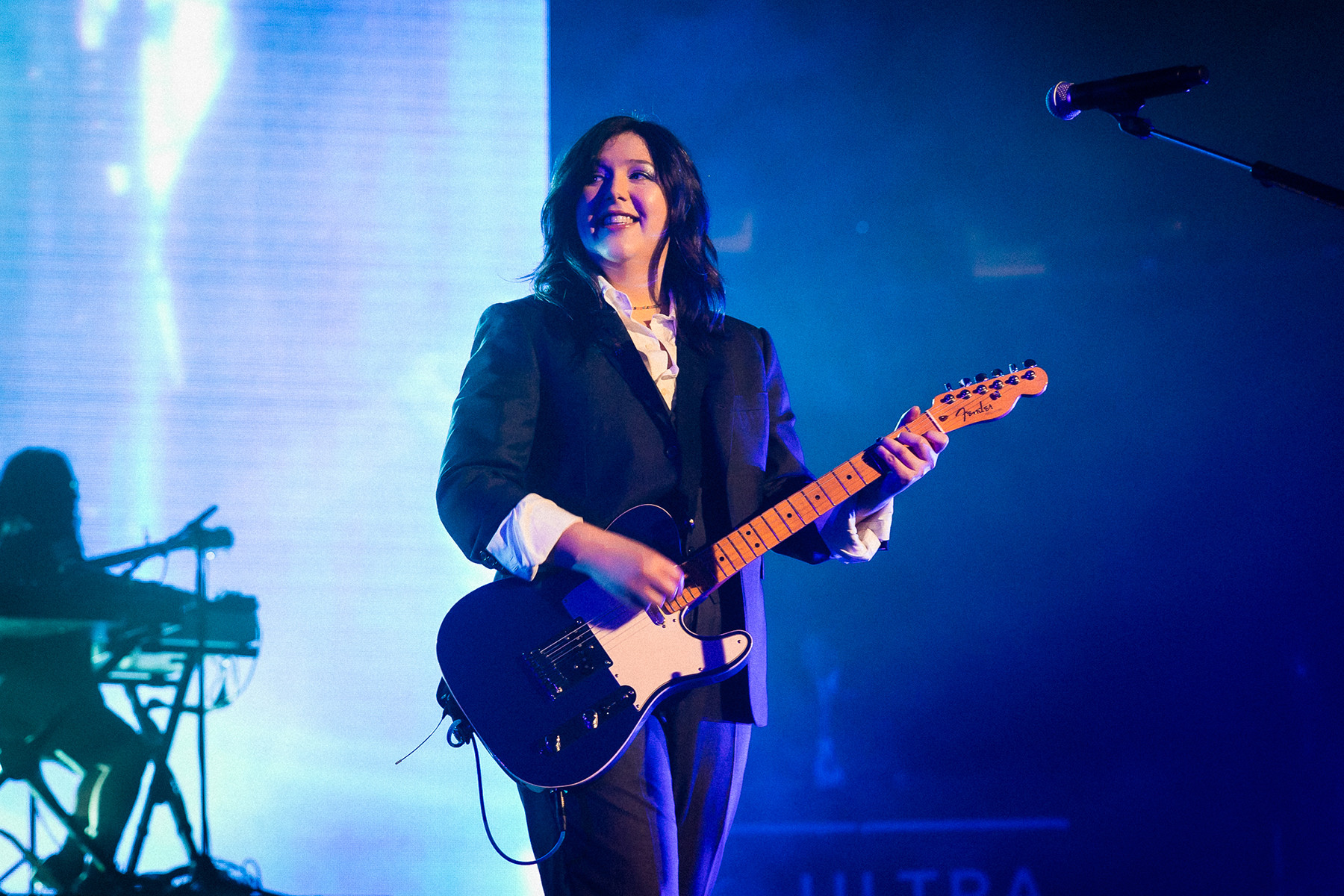 Lucy Dacus performing live, showcasing her essential guitar playing and her understated but crucial role in her solo work and with boygenius. Image Credit: Griffin Lotz for Rolling Stone
Lucy Dacus performing live, showcasing her essential guitar playing and her understated but crucial role in her solo work and with boygenius. Image Credit: Griffin Lotz for Rolling Stone
For Lucy Dacus, guitar is as vital as her voice. From “I Don’t Wanna Be Funny Anymore” to boygenius, her arrangements are understated yet essential. Live performances of “Night Shift” showcase her dynamic playing, building from quiet strumming to intense catharsis. —L.L.
Key Tracks: “Night Shift,” “I Don’t Wanna Be Funny Anymore”
José Feliciano
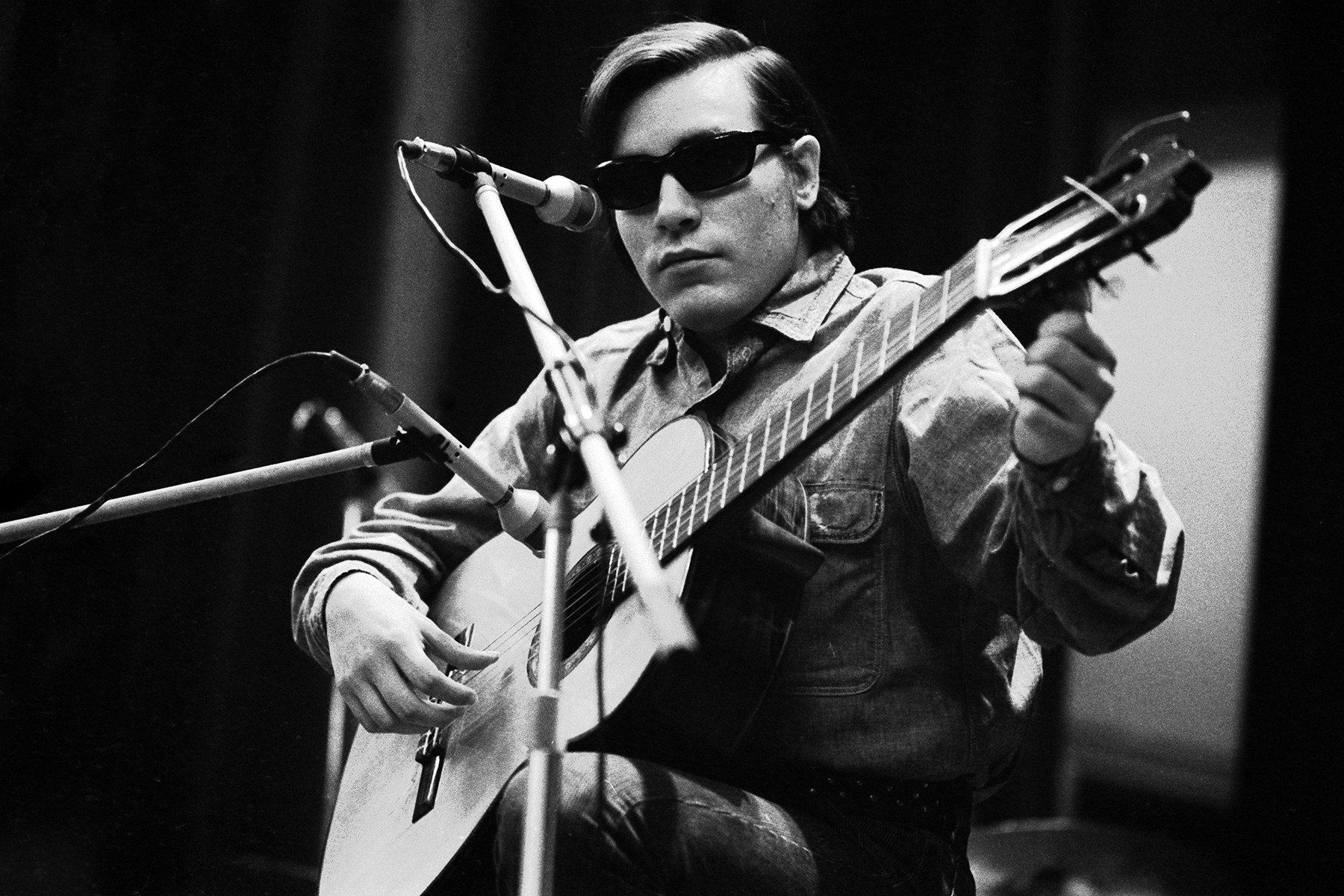 José Feliciano performing live in 1973, demonstrating his acoustic guitar virtuosity and his genre-bending approach that revolutionized pop rock in the 60s. Image Credit: Evening Standard/Hulton Archive/Getty Images
José Feliciano performing live in 1973, demonstrating his acoustic guitar virtuosity and his genre-bending approach that revolutionized pop rock in the 60s. Image Credit: Evening Standard/Hulton Archive/Getty Images
José Feliciano, beyond “Feliz Navidad,” is an acoustic guitar virtuoso. His playing, both lyrical and fierce, is rooted in boleros and folk songs. His blend of rock, jazz, soul, and bossa nova changed Sixties pop rock. His reinvention of “California Dreamin’” and “Light My Fire” were groundbreaking.—E.L.
Key Tracks: “Light My Fire,” “Here, There and Everywhere”
Nick Zinner
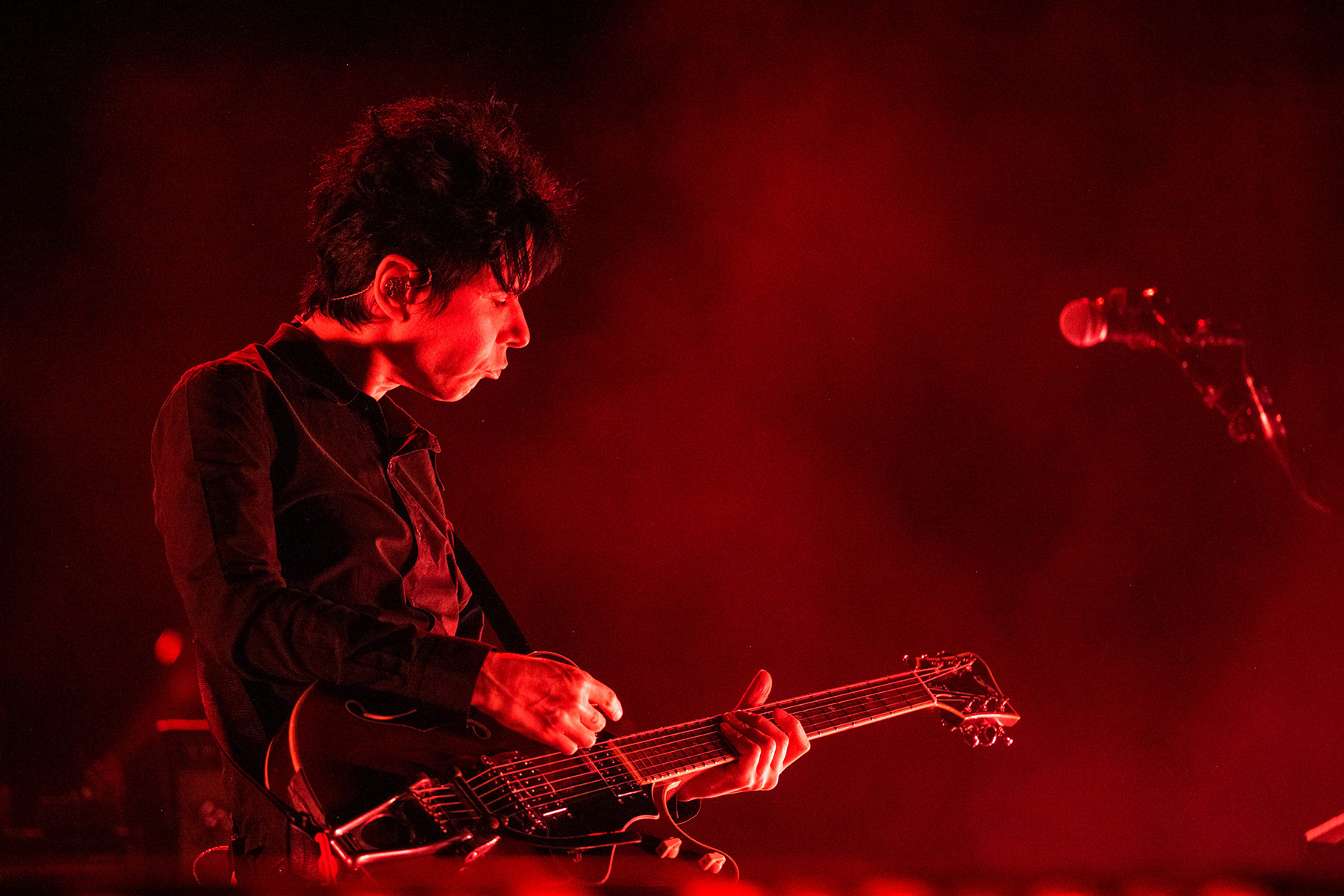 Nick Zinner of Yeah Yeah Yeahs in a portrait, capturing his signature trashy, punky, and grimy guitar style that defines the band's iconic sound. Image Credit: Sacha Lecca for Rolling Stone
Nick Zinner of Yeah Yeah Yeahs in a portrait, capturing his signature trashy, punky, and grimy guitar style that defines the band's iconic sound. Image Credit: Sacha Lecca for Rolling Stone
Nick Zinner of Yeah Yeah Yeahs aimed for “trashy, punky, grimy” sound. His style blends dance-punk, Van Halen panache, Rowland S. Howard’s intensity, and Johnny Marr’s grandeur. His minimal yet emotive guitar work defines Yeah Yeah Yeahs.—Z.Y.
Key Tracks: “Y Control,” “Maps,” “Gold Lion”
Kaki King
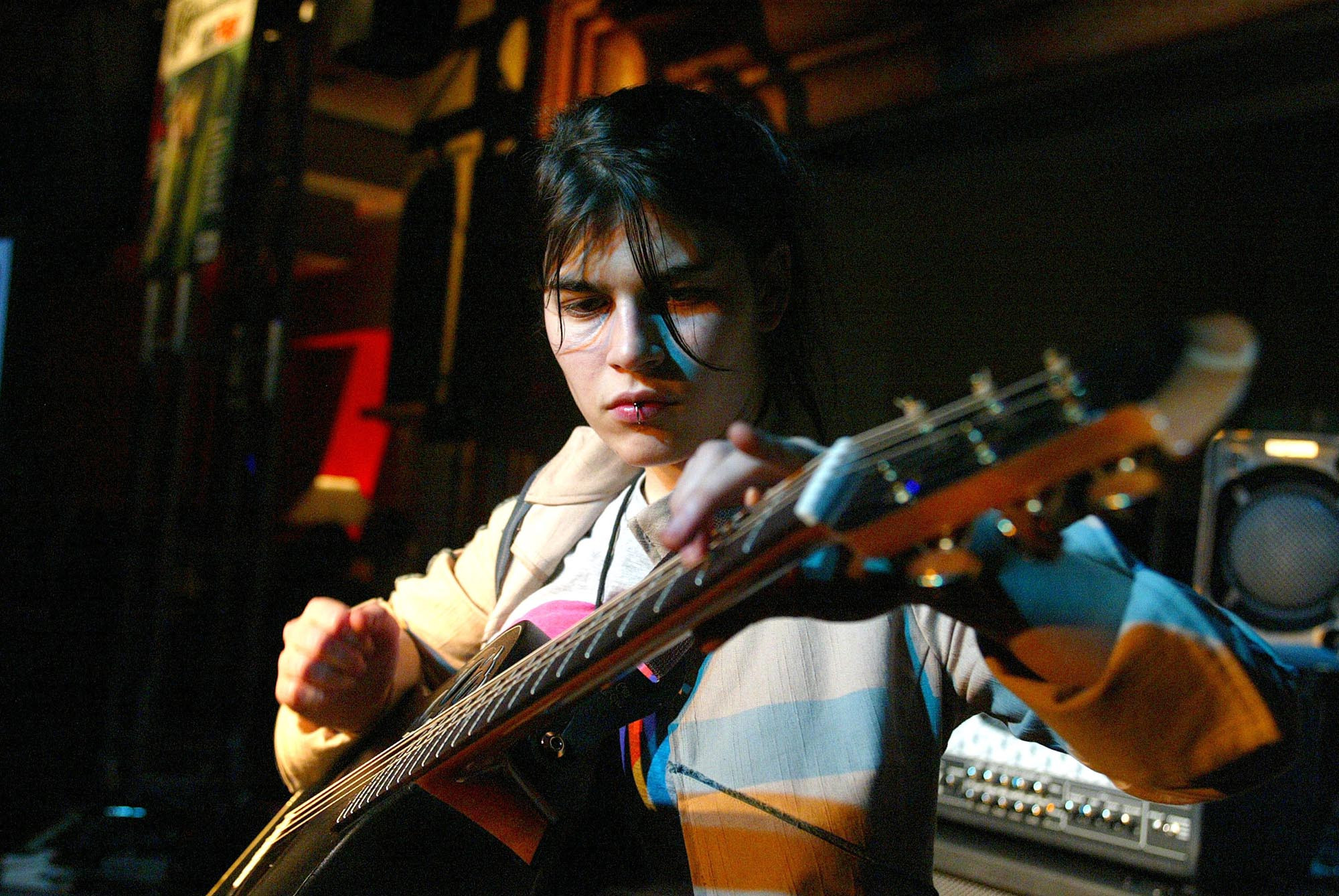 Kaki King performing live, showcasing her sonic adventurousness and her innovative techniques on acoustic guitar, pushing the boundaries of instrumental guitar music. Image Credit: Jeffrey Mayer/WireImage
Kaki King performing live, showcasing her sonic adventurousness and her innovative techniques on acoustic guitar, pushing the boundaries of instrumental guitar music. Image Credit: Jeffrey Mayer/WireImage
Kaki King is a sonic adventurer, blending Preston Reed and John Cage influences on acoustic guitar. She experiments with tunings, treated instruments, loops, finger-style, tapping, and percussive techniques. “When you tune your guitar differently, all of a sudden your fingers and your mind have to be creative again,” she explained.—D.E.
Key Tracks: “Playing With Pink Noise,” “Skimming the Fractured Surface to a Place of Endless Light”
Gary Clark Jr.
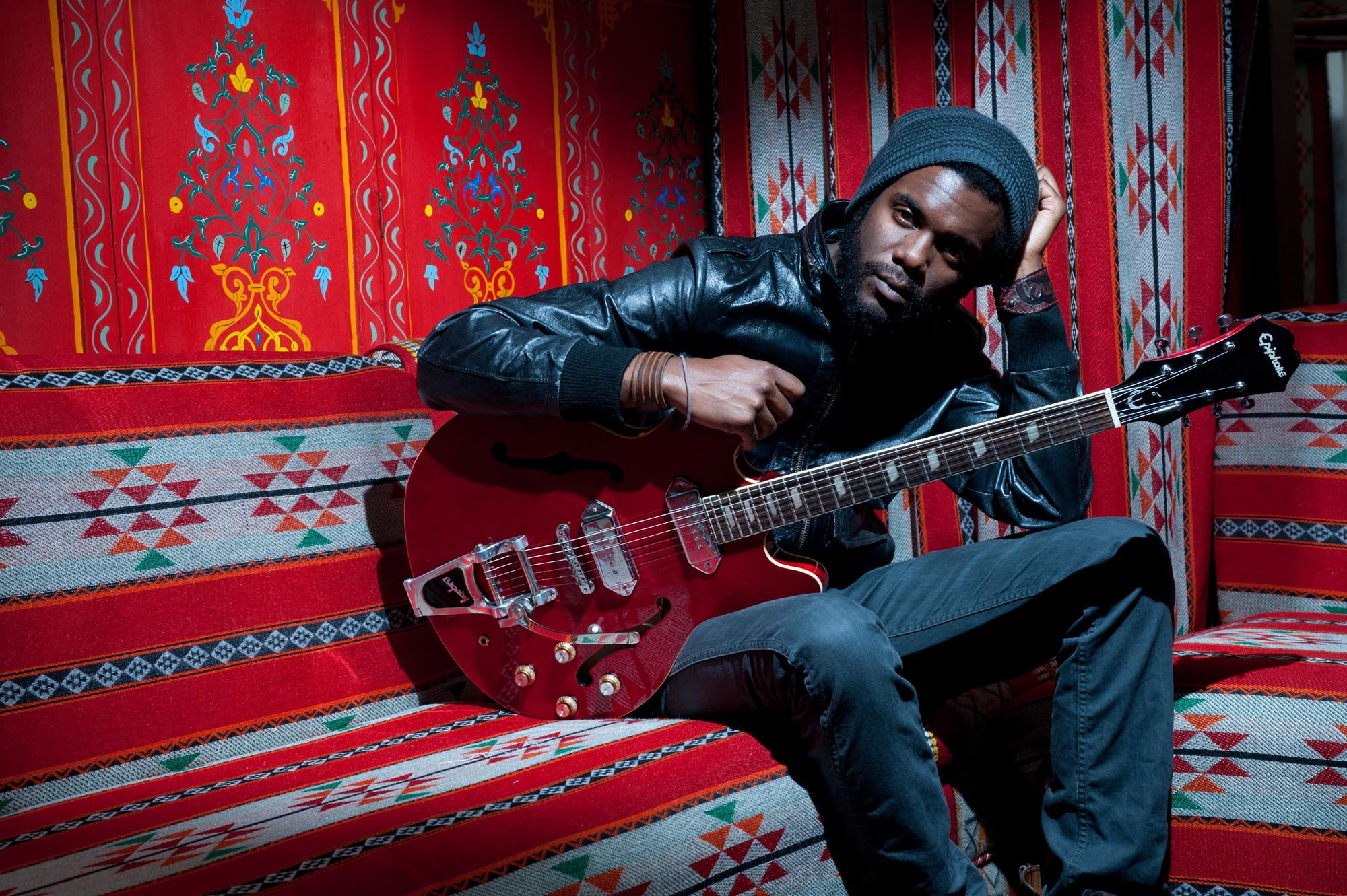 Gary Clark Jr. in a portrait, capturing his blues-rock guitar prowess and his genre-bending approach that incorporates soul, funk, grunge, and hip-hop influences. Image Credit: Rob Monk/Guitarist Magazine/Future/Getty Images
Gary Clark Jr. in a portrait, capturing his blues-rock guitar prowess and his genre-bending approach that incorporates soul, funk, grunge, and hip-hop influences. Image Credit: Rob Monk/Guitarist Magazine/Future/Getty Images
Gary Clark Jr. transcends blues-rock labels, incorporating soul, funk, grunge, and hip-hop. He collaborates with diverse artists. “I don’t think that I’m reaching my full potential if I just do what people expect of me,” he stated. “I love to play, and I love to experiment, and there are a lot more roads to explore.”—D.E.
Key Tracks: “This Land,” “Grinder”
Amadou Bagayoko
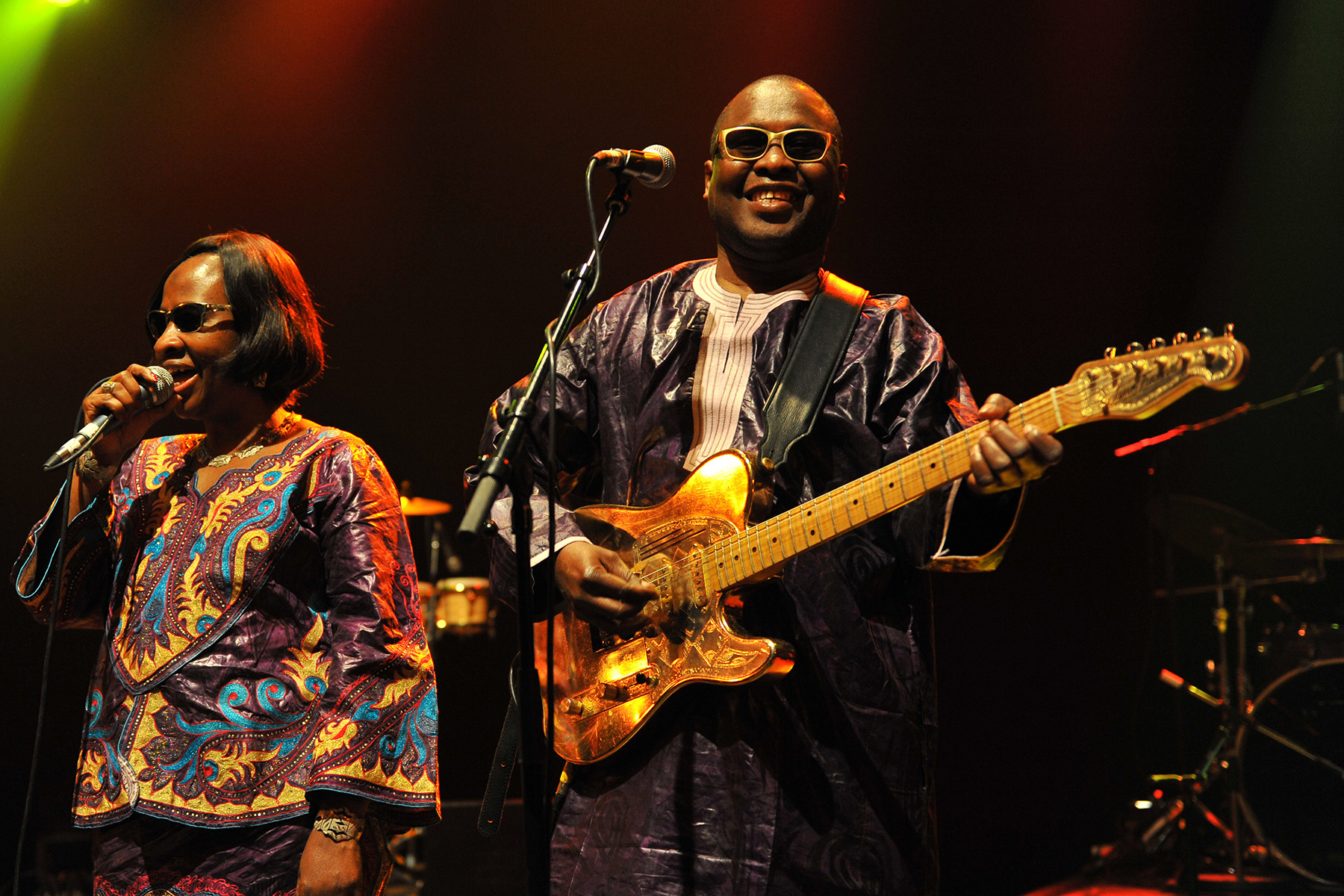 Amadou Bagayoko of Amadou & Mariam performing live, demonstrating his jaunty and occasionally skronky guitar leads that blend Malian rhythms with Western pop influences. Image Credit: C Brandon/Redferns via Getty Images
Amadou Bagayoko of Amadou & Mariam performing live, demonstrating his jaunty and occasionally skronky guitar leads that blend Malian rhythms with Western pop influences. Image Credit: C Brandon/Redferns via Getty Images
Amadou Bagayoko of Amadou & Mariam blends Malian duets with Western pop influences. His jaunty guitar leads drive their melodic sound. “People are often surprised when we explain how much we were influenced by Western pop music,” Bagayoko laughed. “I grew up listening to records by Rod Stewart, Led Zeppelin… That’s because they were the only records we had in Mali!”—M.M.
Key Tracks: “Djanfa,” “Ce N’est Pas Bon”
Justin Broadrick
 Justin Broadrick in a portrait, capturing his pioneering industrial metal guitar sound and his diverse projects from Godflesh to Napalm Death and Jesu. Image Credit: Karjean Levine/Getty Images
Justin Broadrick in a portrait, capturing his pioneering industrial metal guitar sound and his diverse projects from Godflesh to Napalm Death and Jesu. Image Credit: Karjean Levine/Getty Images
Justin Broadrick created a unique guitar lexicon across Godflesh, Napalm Death, and Jesu. His elastic riffs in Godflesh brought humanity to mechanical rhythms. In Napalm Death, he pioneered grindcore’s sound. In Jesu, he layered noise into beautiful soundscapes. His guitar “sighs, groans, and weeps,” uniquely.—K.G.
Key Tracks: “Like Rats,” “Silver,” “Scum”
Hugh McCracken
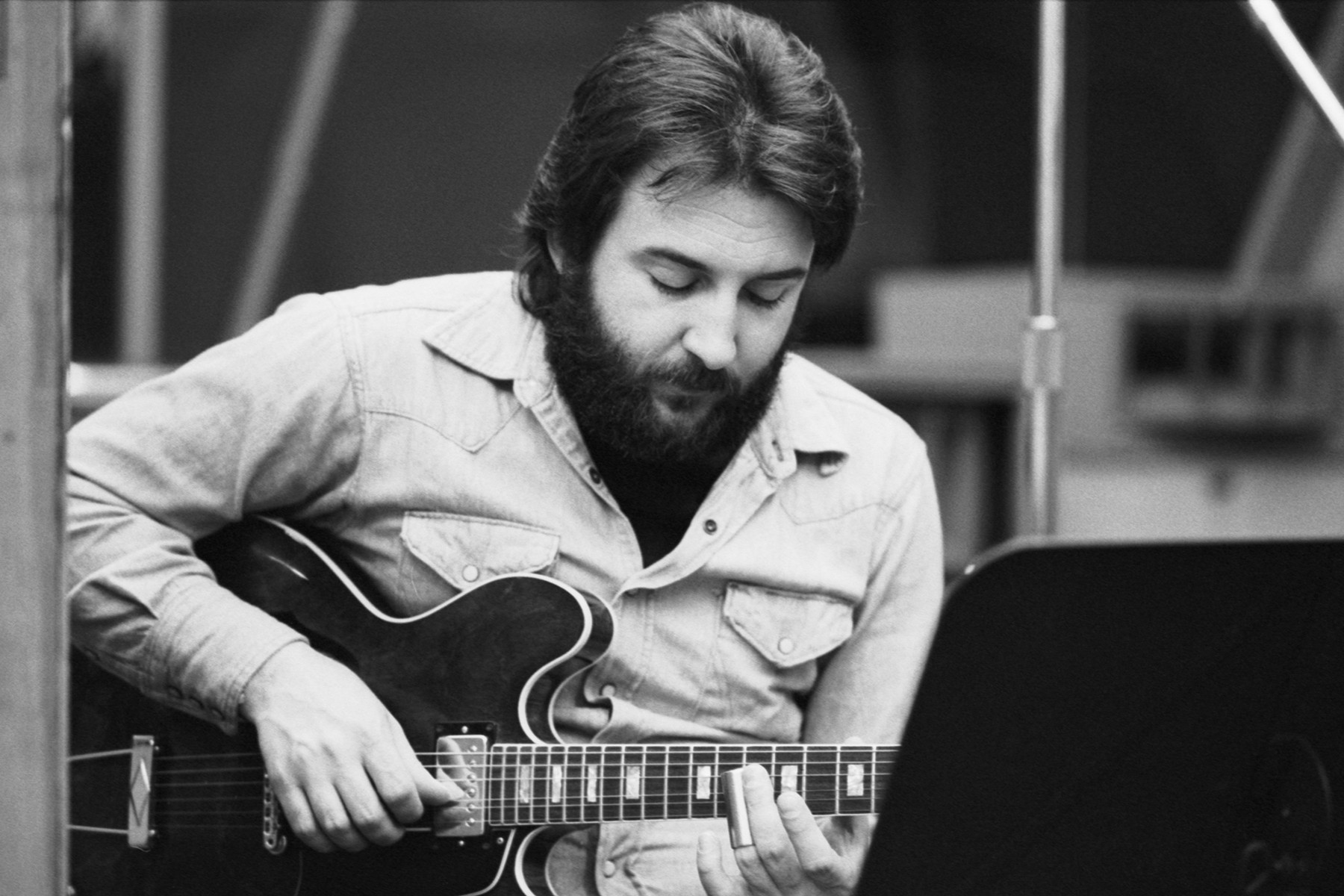 Hugh McCracken in a portrait during a recording session, capturing his legendary status as a session guitarist and his tasteful contributions to countless classic songs. Image Credit: David Gahr/Getty Images
Hugh McCracken in a portrait during a recording session, capturing his legendary status as a session guitarist and his tasteful contributions to countless classic songs. Image Credit: David Gahr/Getty Images
Hugh McCracken, an East Coast session guitarist, left his mark on classics. His lead on Steely Dan’s “Hey Nineteen,” lick on Van Morrison’s “Brown Eyed Girl,” and acoustic on Roberta Flack’s “Killing Me Softly” are iconic. He enriched Paul Simon, Alicia Keys, and John Lennon’s tracks. He declined Paul McCartney’s Wings offer, content in studio work.—D.B.
Key Tracks: “Hey Nineteen,” “Killing Me Softly With His Song”
Eric Johnson
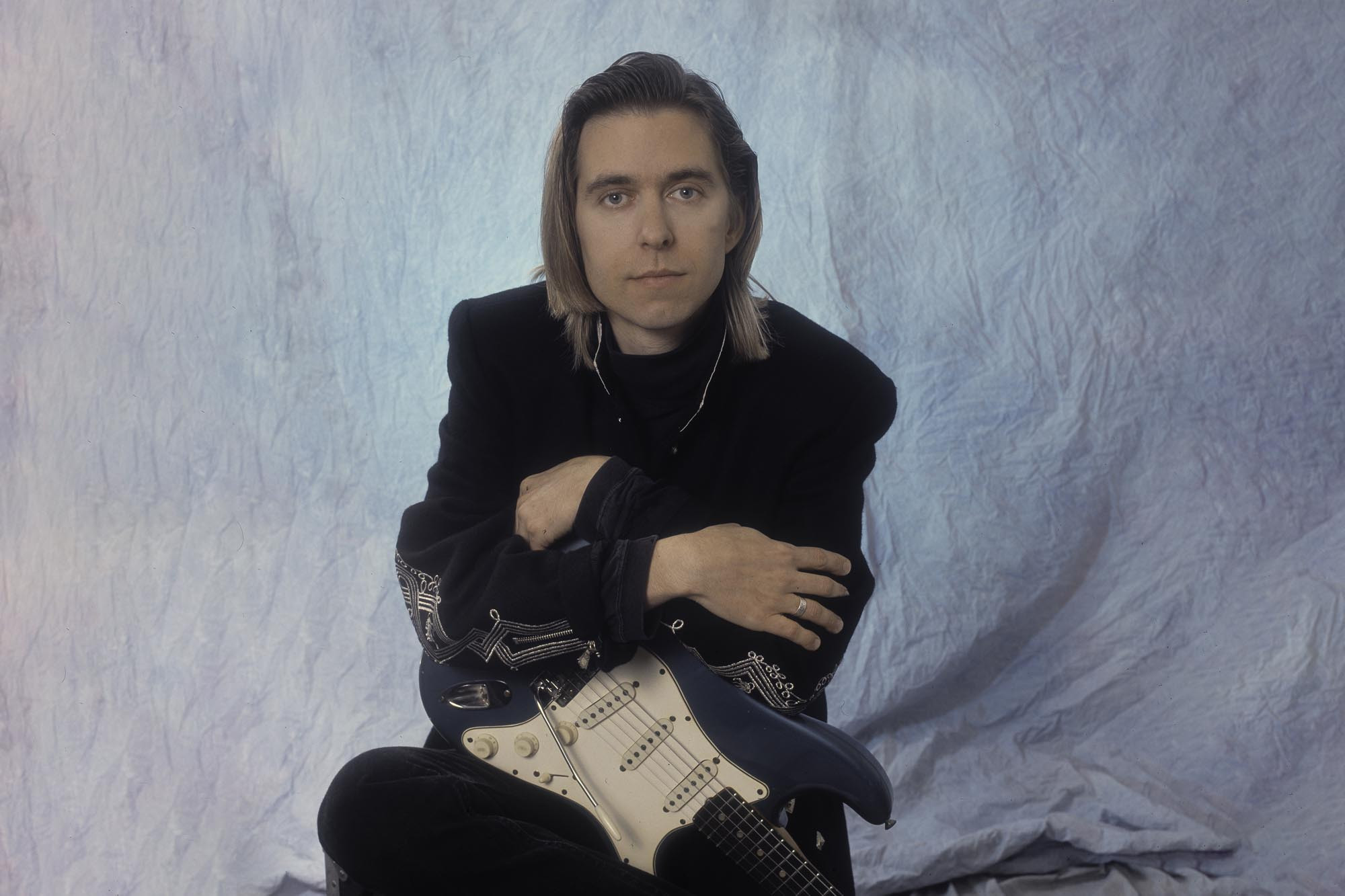 Eric Johnson in a portrait, capturing his consummate guitar technique and his status as a player admired by peers like Steve Morse and Stevie Ray Vaughan. Image Credit: Paul Natkin/Getty Images
Eric Johnson in a portrait, capturing his consummate guitar technique and his status as a player admired by peers like Steve Morse and Stevie Ray Vaughan. Image Credit: Paul Natkin/Getty Images
Eric Johnson, an Austin technician, is revered by peers. Steve Morse raved, “Eric’s so good it’s ridiculous,” and Stevie Ray Vaughan called him “one of my favorite guitarists.” A fusion stylist leaning towards rock, his instrumental album Ah Via Musicom went platinum. He’s known for guitar collaborations like G3 and Eclectic.-J.D.C.
Key Tracks: “Cliffs of Dover,” “Benny Man’s Blues”
Lynn Taitt
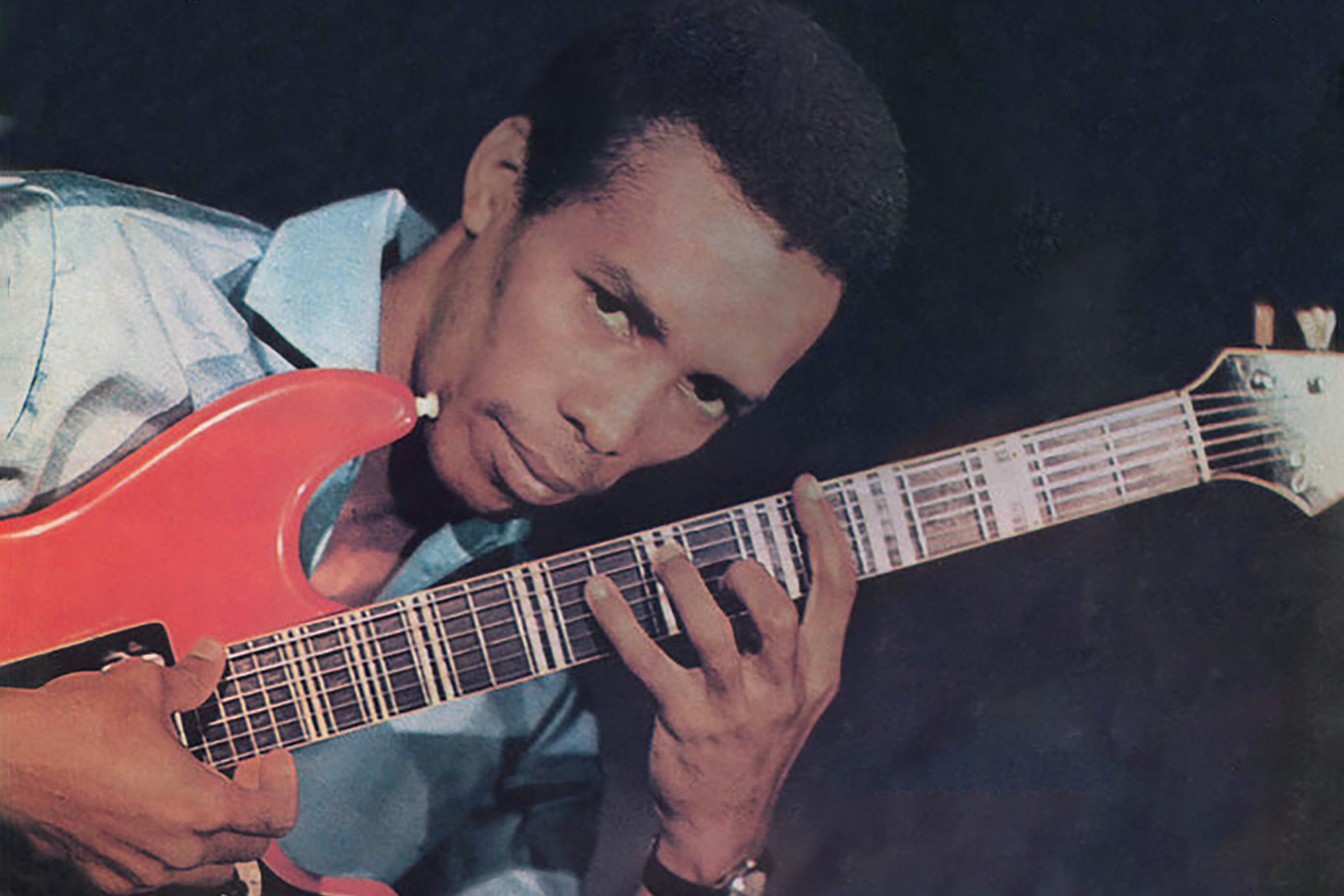 Lynn Taitt in a portrait, capturing his pioneering role in creating the guitar sound of rocksteady music in Jamaica and his influence on reggae guitar. Image Credit: Federal Records
Lynn Taitt in a portrait, capturing his pioneering role in creating the guitar sound of rocksteady music in Jamaica and his influence on reggae guitar. Image Credit: Federal Records
Lynn Taitt created rocksteady guitar in Jamaica, playing on early recordings like “Take It Easy” and “Tougher Than Tough.” He became the top session guitarist after Ernest Ranglin left. His work on “007 (Shanty Town)” is iconic. His student Hux Brown refined Taitt’s style, shaping reggae guitar.—M. Goldwasser
Key Tracks: “007 (Shanty Town),” “Take It Easy”
Grant Green
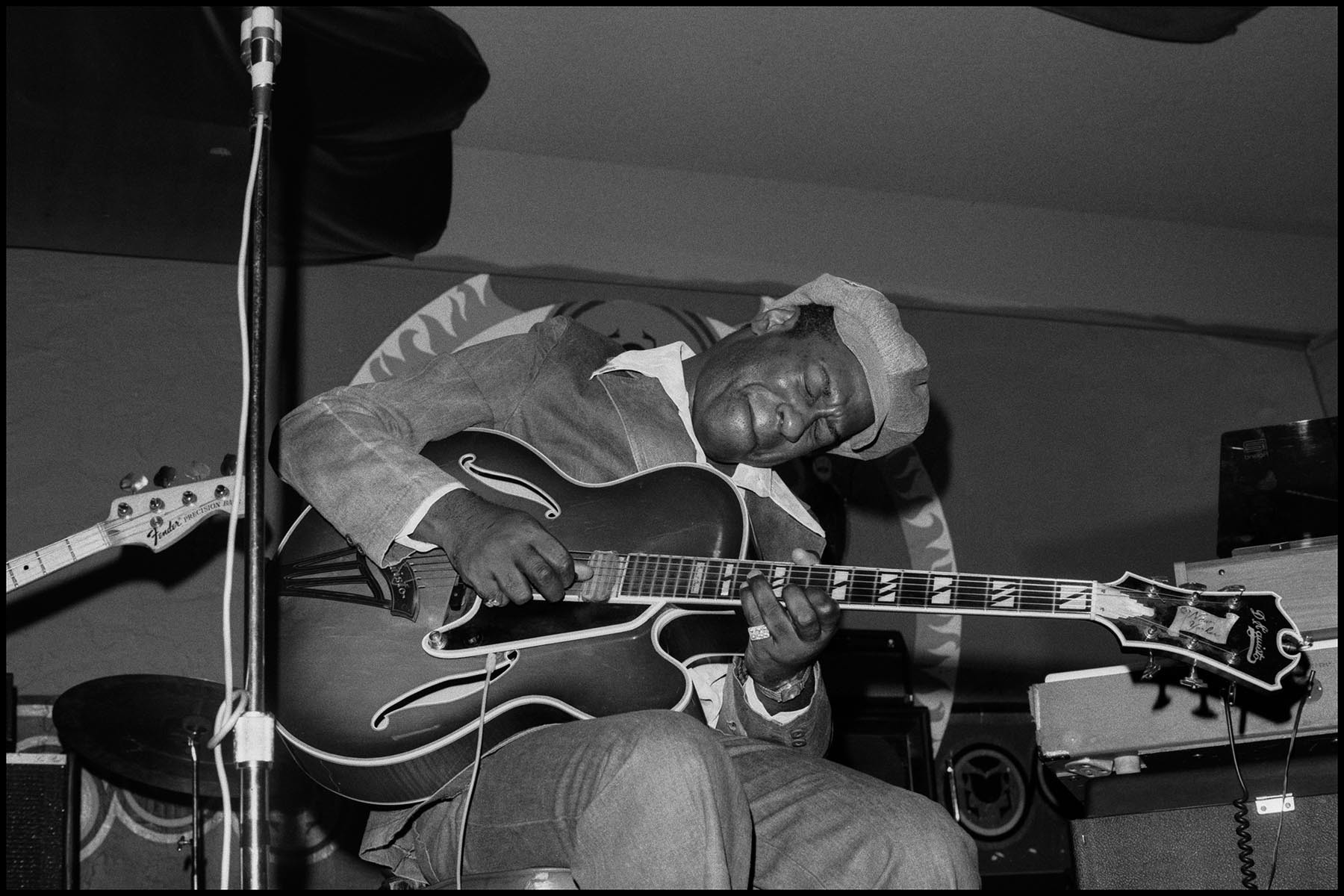 Grant Green performing live in 1975, showcasing his cool jazz guitar style and his pioneering role in soul-jazz, influencing hip-hop and beyond. Image Credit: Janet Fries/Getty Images
Grant Green performing live in 1975, showcasing his cool jazz guitar style and his pioneering role in soul-jazz, influencing hip-hop and beyond. Image Credit: Janet Fries/Getty Images
Grant Green, from hard bop, pioneered soul-jazz. A Charlie Parker fan, his Blue Note debut in 1960 launched a stellar run with albums like Idle Moments. He explored Latin jazz in Matador. His influence endures, especially in hip-hop, sampled by A Tribe Called Quest and Kendrick Lamar.—R.S.
Key Tracks: “Idle Moments,” “Jean De Fleur,” “On Green Dolphin Street”
Vince Gill
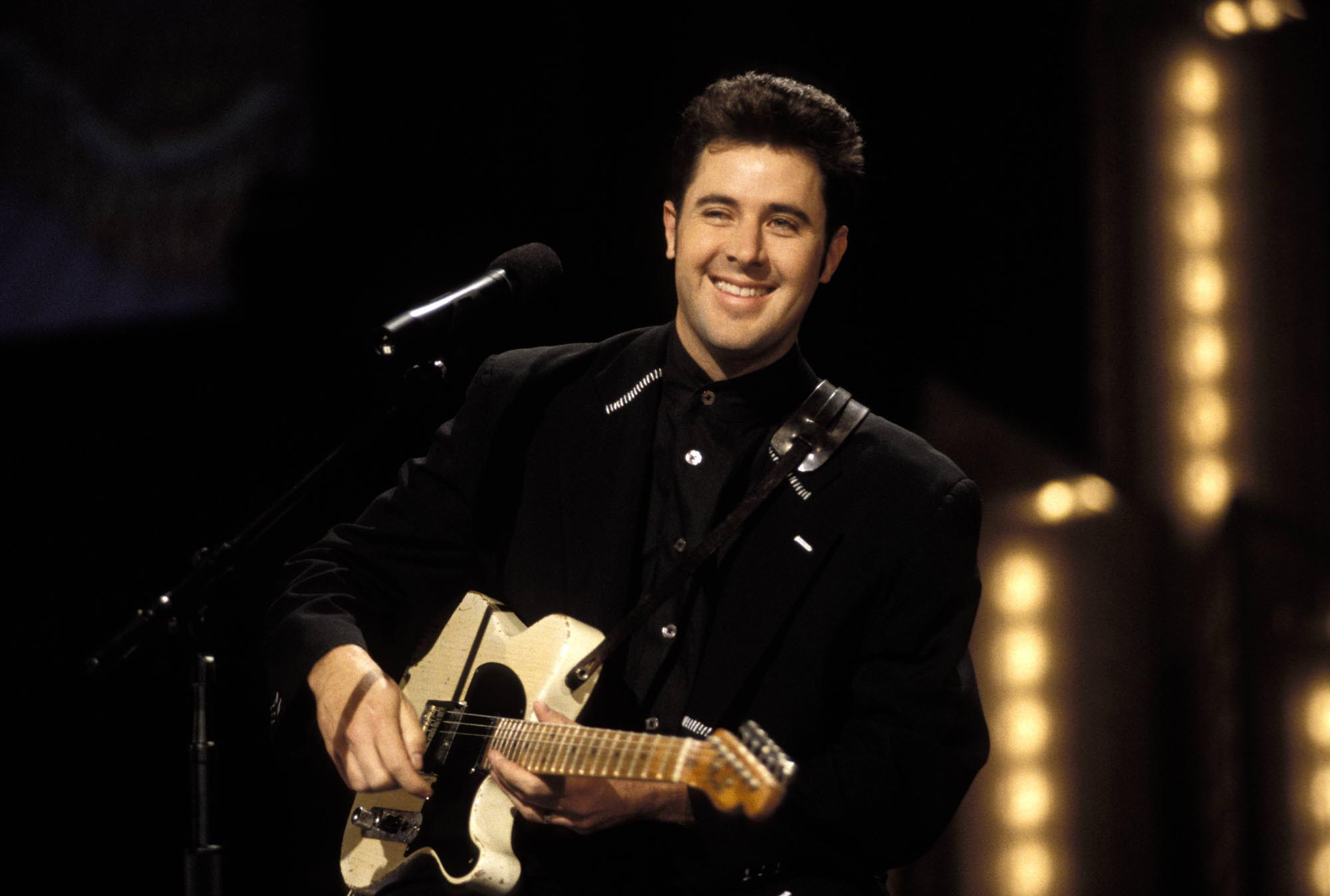 Vince Gill in a portrait, capturing his dual mastery as a vocalist and guitarist, celebrated in country music and beyond for both his voice and his guitar skills. Image Credit: Beth Gwinn/Redferns/Getty Images
Vince Gill in a portrait, capturing his dual mastery as a vocalist and guitarist, celebrated in country music and beyond for both his voice and his guitar skills. Image Credit: Beth Gwinn/Redferns/Getty Images
Vince Gill is celebrated as a country vocalist, but he’s also a lethal guitarist. His chicken picking and twangy bends are highlights. He honors California country guitarists and has played on countless albums. He joined the Eagles after Glenn Frey’s death, doubling as vocalist and guitarist.—J.F.
Key Tracks: “Liza Jane,” “Oklahoma Borderline”
Garry ‘Diaper Man’ Shider
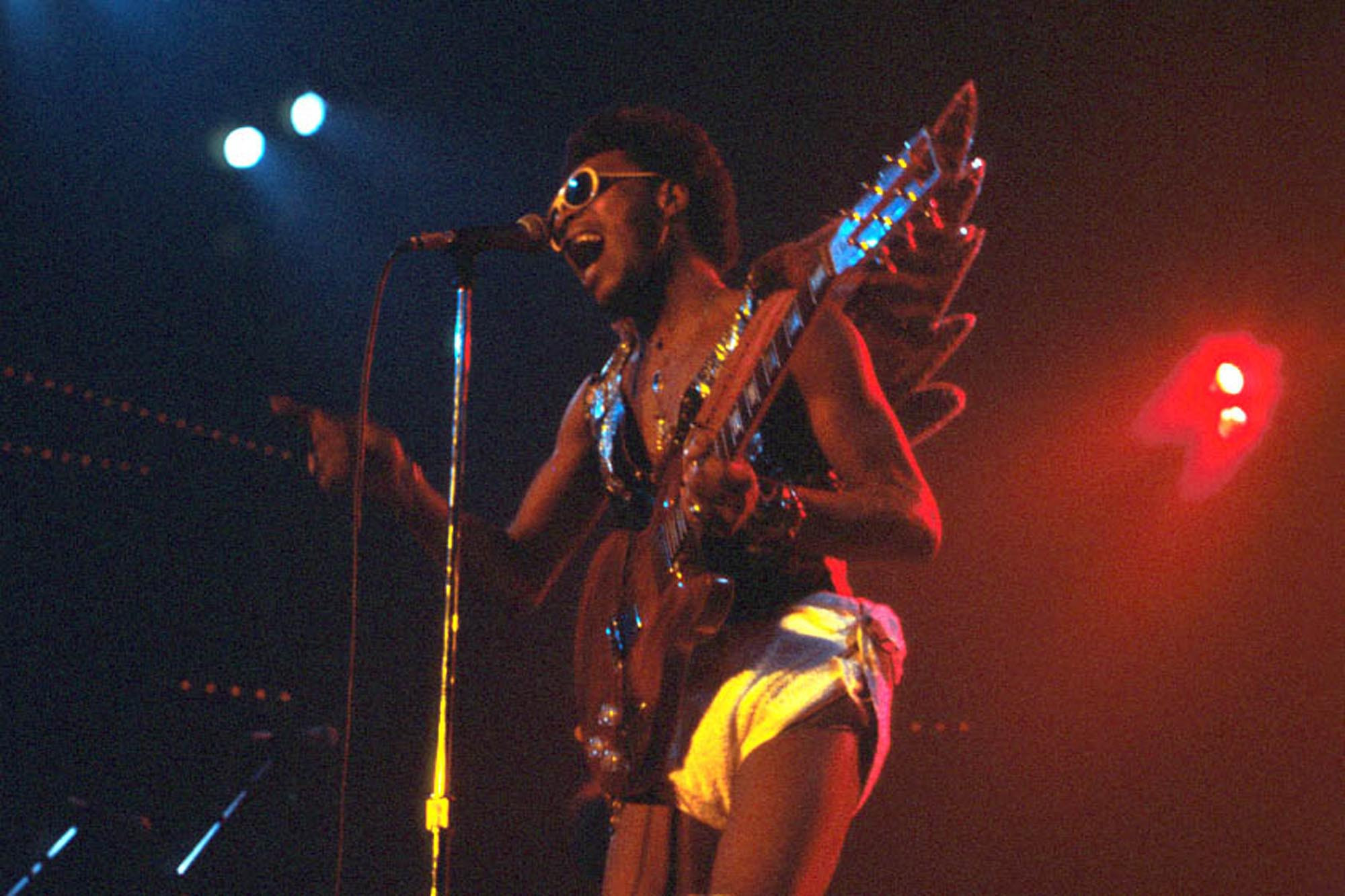 Garry "Diaper Man" Shider of Parliament performing live in 1977, showcasing his funky guitar rhythms and his role in defining the P-Funk sound and stage persona. Image Credit: Michael Ochs Archives/Getty Images
Garry "Diaper Man" Shider of Parliament performing live in 1977, showcasing his funky guitar rhythms and his role in defining the P-Funk sound and stage persona. Image Credit: Michael Ochs Archives/Getty Images
Garry Shider of Parliament/Funkadelic, “Diaper Man,” was known for searing leads and master rhythm guitar. He co-wrote “One Nation Under a Groove” and “Atomic Dog.” He played in Parliament/Funkadelic, Bootsy’s Rubberband, and P-Funk All Stars, also collaborating with Paul Schaffer and the Black Crowes.—J.D.C.
Key Tracks: “Cosmic Slop,” “One Nation Under a Groove”
Conclusion: The Ever-Evolving Definition of Guitar Greatness
Defining the greatest guitar player in the world remains a delightful, impossible task. This list of 250 guitarists isn’t a definitive ranking, but rather a celebration of the instrument’s boundless potential and the diverse individuals who have shaped its voice. From technical virtuosity to raw innovation, from genre pioneers to behind-the-scenes masters, each guitarist on this list has contributed to the ongoing narrative of the guitar.
The criteria—favoring feel over polish, invention over refinement, and impactful songwriting over mere technical display—reflects a recognition that true guitar greatness transcends skill alone. It’s about expression, innovation, and the ability to connect with audiences on a profound level. As music continues to evolve, so too will our understanding of what constitutes a truly great guitar player. This list serves as a starting point, an invitation to explore the vast and vibrant world of guitar music and to continue the never-ending conversation about who truly deserves to be called the greatest guitar player in the world. Perhaps, the answer isn’t a single name, but the collective contributions of these 250 artists, and the countless others who continue to pick up the instrument and explore its limitless possibilities.

